#turns out its a prehistoric mammalian
Explore tagged Tumblr posts
Note
Moropus with four arms please.
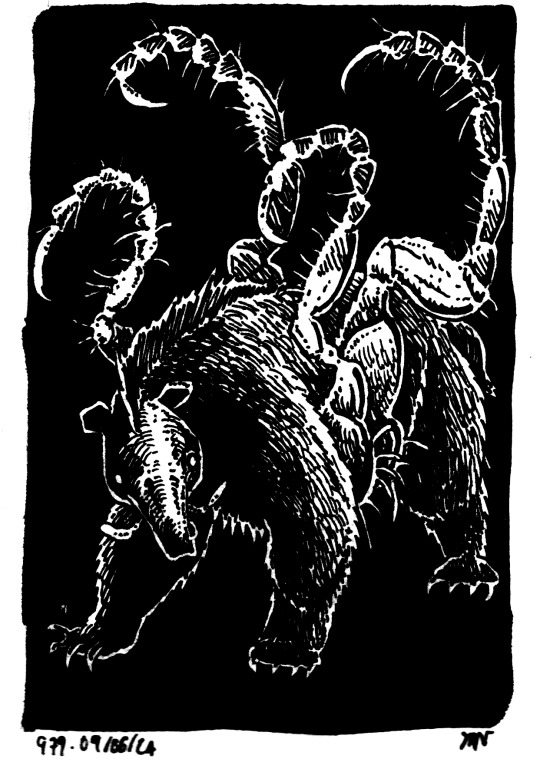
#i legit thought moropus was some kind of scifi monster by the name#turns out its a prehistoric mammalian#check 978 for the vanilla moropus#and so i wanted to make it scifiesque#the evolution of the moropus darwin didnt want you to know#again a pun because moropus sounds like “mort aux puces” in french and “puce” means lice#tapir#donkey#bear#moropus#pseudopaleo#evolution#suggestion#gaul-the-unmitigated#chimera#bestiary#monster#creature design#ink#979#octem 123#aer 4#the Unknown
62 notes
·
View notes
Text
Lost Worlds and Certatopsians
So, recently I worked on an article of sorts going over some of the “Lost Worlds” in fiction, focusing mainly on those on the surface (the biological logistics of Inner Earths/Massive Cave Systems was just too much to work with). This included the original Lost World of Maple White Land, Skull Island, The Lost Land, Caprona/Caspak, Pal-Ul-Don, and several different “Ice Age” survival locations I just lumped into “The Mammoth Steppe of Europe and North America” for various reasons.
Most of them showed a wide variety of prehistoric life, but the point of this project was to create a plausible version of such places.
Which did mean removing the Transmutation of Caprona’s life, but it added so much more.
When looking at these locations, I looked at what was reported in the various tellings, re-tellings, media adaptations, followups, sequels, and homages of any major capacity that I could get my hands on.
For the most part.
Jongor of the Lost Land is something I stuck to reference material for. And the less I say about just how many bad The Lost World stories I’ve slogged through, the better.
The best The Lost World follow-up story ever produced is Disney-Pixar’s Up��in case you are curious.
Anyway, one of the big problems is that many of these places were set in what was, in the Jurassic, known as Gondwana (or Gondwanaland). Maple White Land (The Lost World), Caspak/Caprona (The Land that Time Forgot), Skull Island (King Kong), and Pal-Ul-Don (Tarzan the Terrible) are all on that former supercontinent.
And they mostly have a similar problem: Ceratopsians.
For those who don’t know, Ceratopsians or Horned Dinosaurs like Triceratops, are primarily known from Asia and North America. In Asia, they were mostly small animals like Protoceratops. It is only on the continent of Laramidia (Western North America) that Ceratopsians got huge. That’s where all the big names are: Triceratops, Styracosaurus, Centrosaurus, Chasmosaurus, etc.
But writers at the turn of the last century didn’t really know the prehistoric dinosaurian fauna of anywhere but the northern hemisphere. It’s only in the last few decades that any information has come out at all.
And almost no Ceratopsids.
So, I tried to work out just how to make the Ceratopsians work.
Sometimes I had to take into account Continental Drift.
For Skull Island, I proposed it broke off from Asia some time in the late cretaceous and followed a path of being a reverse India. The volcanic crevasses allowing some of the medium-sized dinosaurs to survive and repopulate after the KT Extinction event. This actually included quite a variety of animals.
For others, I had to look at “This MAY be a ceratopsian, but we don’t know for sure” dubious fragments such as Notoceratops (South America) for Maple White Land, and Serendipaceratops (Australia) for Caprona and The Lost Land.
But I could not get a Ceratopsian to Pal-Ul-Don. Which is a big problem because they’re central to some plot elements (and also portrayed as Omnivores, so that’s fun).
The same occurred with the ubiquitous Stegosaurs. Stegosaurs didn’t survive to even see the KT Boundary, undone by Ankylosaurs and more intelligent predators. So, I had to find something to fill in. At first I thought large herbivorous crocodilians could do it, but then I remembered Meiolaniid tortoises, a club-tailed turtle, and had one convergently shape its shell with serrated edges and boom, we had a stegosaur fit the old-outdated description.
But, in all honesty, the biggest surprise was just how many weird mammals I could get.
Both South America and Australia had a TON of weird mammals in the Neogene and Paleogene. And a lot of those stories had prehistoric mammals just plucked up and put in wherever. There were enough analogues to get in some real fun things.
And thanks to a scientific paper I found with an actual formula for “Land Mass to body weight ratio for Herbivores and Carnivores based on if they are endothermic or ectothermic”, I was able to figure out how large an area would need to be to get things that could threaten a human.
Minimun size is about as big as Borneo, New Guinea, or Madagascar, by the way. That way we can have a dinosaurian carnivore of at least 1 ton and a mammalian herbivore also of about 1 ton.
And a Sauropod DInosaur of about 10 tons.
Overall, it’s been pretty good setup stuff.
But one thing still bugs me on a “Should I do this” level.
Should I have Homo floresiensis on Skull Island or not? That way, Gigantopithecus can be “Kong Sized” to the natives.
#Lost World#Dinosaurs#Prehistoric#Paleontology#Fiction#The Lost World#The Land that Time Forgot#tarzan#Tarzan the Terrible#Pal-Ul-Don#Jongor#Jongor of the Lost Land#Skull Island#King Kong#I put way to much thought into things#And that's fun for me
23 notes
·
View notes
Text
Chiniquodon
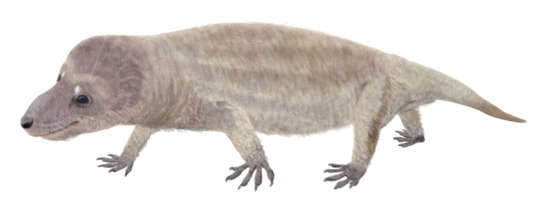
(Image: Chiniquodon, a medium-sized, rather generic-looking protomammal with a short tail, depicted here with a covering of short hair. Image by @Stolpergeist)
Etymology: Tooth from Chiniquá, Brazil
First described by: von Huene, 1936
Classification: Biota, Archaea, Proteoarchaeota, Asgardarchaeota, Eukaryota, Neokaryota, Scotokaryota Opimoda, Podiata, Amorphea, Obazoa, Opisthokonta, Holozoa, Filozoa, Choanozoa, Animalia, Eumetazoa, Parahoxozoa, Bilateria, Nephrozoa, Deuterostomia, Chordata, Olfactores, Vertebrata, Craniata, Gnathostomata, Eugnathostomata, Osteichthyes, Sarcopterygii, Rhipidistia, Tetrapodomorpha, Eotetrapodiformes, Elpistostegalia, Stegocephalia, Tetrapoda, Reptiliomorpha, Amniota, Synapsida, Eupelycosauria, Sphenacodontia, Sphenacodontoidea, Therapsida, Eutherapsida, Neotherapsida, Theriodontia, Eutheriodontia, Cynodontia, Probainognathia, Chiniquodontoidea, Chiniquodontidae
Referred Species: C. theotonicus, C. brasilensis, C. kalanoro, C. sanjuanensis
Status: Extinct (sadly :( )
Time and place: Chiniquodon lived from the Ladinian to the Carnian of South America and Africa (including Madagascar), about 242-227 million years ago.


Physical Description: As a cynodont, Chiniquodon was a close relative of mammals, but it’s aberrant compared to most fossil mammal relatives in one key respect: It’s known from more than just teeth! You heard that right, Chiniquodon is known from several reasonably complete skulls, as well as some body fossils. Thus, we can actually have some discussion of its appearance and anatomy beyond the teeth!
Chiniquodon was a medium to large (for the time) cynodont, with a skull length up to 33cm/13in in length. This skull had wide zygomatic arches (attachment points for jaw muscles!), and a solid secondary palate (as in modern mammals).
Its limbs and hips show that it was adapted to walk with its legs directly under the body, as in modern mammals. It had a fairly short tail. While we don’t have any direct evidence of its body covering, it’s likely that it had some hair, as has been inferred in other cynodonts. It got up to about the size of a medium dog.
…..But let’s be real, this is a mammal relative. We have to talk about teeth at some point.
Luckily for us, Chiniquodon has interesting teeth! Like, really interesting. Here’s a diagram of the skull of a typical chiniquodont:

(Image: A diagram of the skull of a typical chiquodont. It’s got very large canines. Illustration B shows its cheek teeth from the side (top) and from the top (bottom). Image from Abdala and Giannini, 2002.)
What is the significance of these teeth? I guess you’ll have to wait until the “diet” section to find that out!
Diet: Oh look, we’re here. What were we on? Oh, right! The significance of these teeth. I’m sure many of you are chomping at the bit to find out what they were eating, and are about to point to those huge canines as proof that they were ravenous carnivorous beasts. And you may be on the cusp of an incisive argument, but I’d like to remind you that large canines do not a carnivore make, and modern musk deer have large canines themselves. To truly understand what an animal is eating, we need to look at the teeth that we know it used to process food. In this case, those are the cheek teeth.
The cheek teeth of Chiniquodon are a particular shape of tooth called a carnassial. That carn- is the same carn- as in carnivore or carnival or chile con carne, and it means meat. That’s because it’s a shape of cheek tooth that is especially good at cutting meat, because they have very large cusps that shear past each other when the animal bites down. Carnassials are found in many modern carnivorans (including dogs and cats!), but the carnassials of Chiniquodon evolved completely independently from those of dogs or cats – an amazing example of convergent evolution.
Behaviour: As a terrestrial carnivore, Chiniquodon must have hunted at some time. It likely hunted small vertebrates, such as other synapsids or young dinosaurs, though it likely wouldn’t have turned down scavenging from a carcass or eating bugs when it was younger. It almost certainly laid eggs, which it may have laid in a burrow. It is not clear whether any parental care was present.
Ecosystem: During the Triassic, all of the continents were combined into one, and this led to a very hot and dry climate over much of the Earth. Chiniquodon’s environment was no exception, and fossils of it are found in rocks interpreted to have been deposited by braided streams in an arid environment. With that said, some fossils of it are also found in rocks distributed during the Carnian Pluvial Event (aka That Time It Rained For Several Thousand Years; no relation to carnassials). These rocks contain the remains of animals like the early dinosaurs Eoraptor and Herrerasaurus, crocodile relatives like Gualosuchus, large dicynodonts like Ischigualastia, and other cynodonts like Probainognathus.
Other: Chiniquodon, in our prehistoric hindsight, is positioned right around one of the most significant transitions in mammalian evolution. It records the condition of cynodonts at a pivotal point, when it and its relatives were only just evolving furry body coverings and specialised jaw joints, and it’s a crucial fossil in untangling how its close close relatives miniaturised, going from medium-sized animals to the tiny shrew-like creatures that became the ancestors of all mammals. Today, with our prehistoric hindsight, Chiniquodon represents a sideshoot off of the mammal line during a pivotal transition time – but in its brightest day, when it was scurrying about the floodplains of South America and Africa, it was merely another animal fighting for existence in the world of the Triassic.
~ By Hayley Orlowski
Sources under the cut
Abdala, F.; Giannini, N. P. (2002). "Chiniquodontid cynodonts: systematic and morphometric considerations". Palaeontology. 45 (6): 1151–1170. doi:10.1111/1475-4983.00280.
Kammerer, C. F., Flynn, J. J., Ranivoharimanana, L., & Wyss, A. R. (2010). The first record of a probainognathian (Cynodontia: Chiniquodontidae) from the Triassic of Madagascar. Journal of Vertebrate Paleontology, 30(6), 1889–1894. doi:10.1080/02724634.2010.520784
Kemp, T. S. (2009). The endocranial cavity of a nonmammalian eucynodont, Chiniquodon theotenicus, and its implications for the origin of the mammalian brain. Journal of Vertebrate Paleontology, 29(4), 1188–1198. doi:10.1671/039.029.0430
Martinez, R. N., & Forster, C. A. (1996). The skull of Probelesodon sanjuanensis, sp. nov., from the Late Triassic Ischigualasto Formation of Argentina. Journal of Vertebrate Paleontology, 16(2), 285–291. doi:10.1080/02724634.1996.10011315
Mocke, H. B. (2016). The postcranium of the carnivorous cynodont Chiniquodon from the Middle Triassic of Namibia and the palaeo-environment of the Upper Omingonde Formation (Masters dissertation).
Oliveira, T. D., Schultz, C. L., & Soares, M. B. (2009). A partial skeleton of Chiniquodon (Cynodontia, Chiniquodontidae) from the Brazilian Middle Triassic. Revista Brasileira de Paleontologia, 12(2), 113-122.
#chiniquodon#chiniquodontian#cynodont#probainognathian#triassic#triassic madness#triassic march madness#prehistoric life#paleontology
257 notes
·
View notes
Text
What if Dragons Were Real: Part Two

Recently, I wrote an article titled “What if Dragons Were Real?”. In it, I tried to show not only how dragons (specifically both the limbless and flying, fire breathing varieties) could have arisen naturally, but also how their existence would impact human history. Although I covered many topics and several kinds of dragon, I did not make room to discuss both the Asian dragon, and our own flesh and blood Komodo Dragon, preferring to mention them in a later article.
Now, that article has come.
Let us further indulge in speculation and alternate history, as well as modern zoology, as we continue to answer the question: what if dragons were real?
1. DRAGONS OF THE FAR EAST
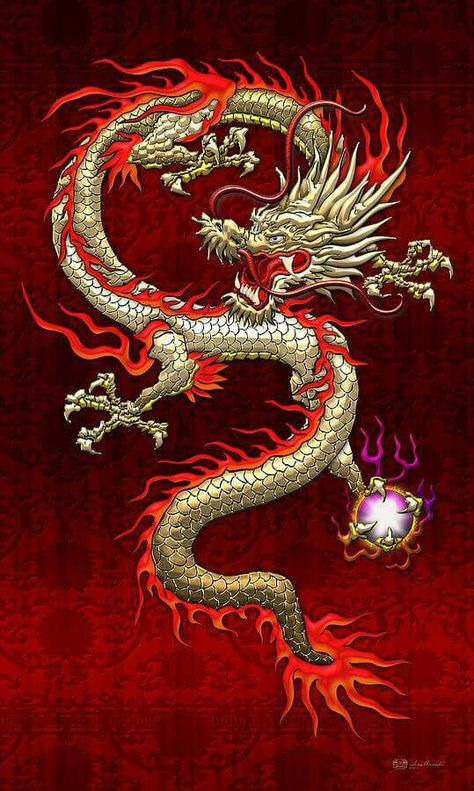
Before we can speculate on how Asian dragons could have arisen, we need to better understand what Asian dragons are.
One of the best ways to do so is to contrast them with the more familiar dragons of the West.
Dragons in both Europe and Christian Russia were viewed as formidable critters. They were potent dangers to both livelihoods and lives. Sometimes they were depicted as being pacified with young maidens, the villagers rather having one of their own eaten rather than the entire village being both incinerated and eaten. These dragons were arch rivals of both knights and saints, creatures who turned their slayers into timeless heroes. Indeed, they were sometimes used symbolically to refer to the Devil.
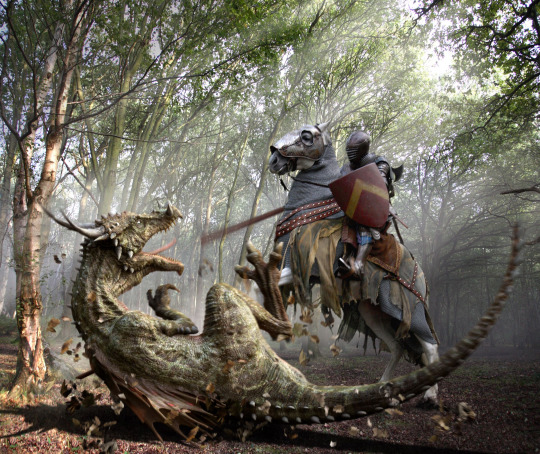
In the Orient, however, dragons were not simply giant, flying monsters. Despite also being formidable when roused, dragons were seen as good, not evil.
Indeed…some were worshipped as gods.
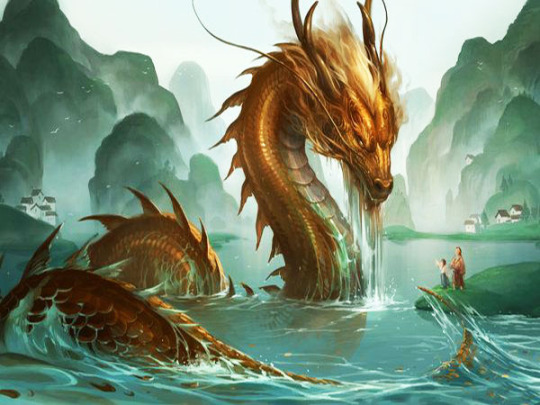
It isn’t hard to see why; Asian dragons were not only very wise, they were capable of impressive magical feats, such as shape shifting and invisibility. They could, depending on the type of dragon, control weather, streams, or serve as protectors of the god’s homes. Daoism taught that dragons were good spirits, though their image was warped a little with influence from Hindu mythology. Chinese dragons, the most famous of Asian dragons, came in a variety of species. However, all Chinese dragons, no matter the species, were thought to undergo the same growth stages:
1. Female dragon lays a richly colored egg.
2. 1000 years later: baby hatches, looks like a snake.
3. 500 years later: head slowly becomes like that of a fish.
4. 1000 years later: Dragon grows long tail, beard, fish scales, four limbs, claws, ears, and a long face.
4. 500 years later: dragon grows horns
5. Yet another 1000 years later: wings.
And you thought puberty was hard.
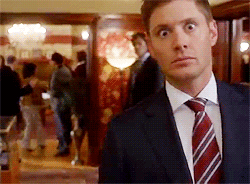
Its odd for most westerners to think of Chinese dragons as having wings, due to being more familiar with the adolescent, wingless form. Yet Chinese dragons were indeed thought to eventually attain wings, though they could fly without them, thanks to either magic pearls or a swelling on their foreheads, which is sometimes labeled “bladder-like”.
Repeat: bladder-like.

Now, if you had read my previous article, you’ll recall that I mentioned how in the documentary “Dragons: A Fantasy Made Real”, hydrogen bladders were invoked as a possible explanation for how dragons could fly, despite not having wings big enough for their enormous bodies. It is an amazing idea, and yet…the ancient Chinese had come up with a quite similar one ages ago. We only need hydrogen and we’re all set. Course, to be fair, a single hydrogen bladder, unless it was of truly ginormous size (perhaps much larger than the rest of the dragon), would not enable a wingless dragon to even float, let alone fly. Nevertheless, people were coming up with a similar answer to dragon flight long before dragon documentaries were made.
Japanese dragons are quite similar to Chinese dragons, with some also considered divine. However, some could be pure monsters who were nevertheless formidable enough to challenge a god. Yamato-no-Orochi, the 8-headed Dragon of Koshi, was one such dragon, a being so formidable that Susa-no-wo (aka Susano-Wo), the Japanese Storm god, resorted to use trickery instead of brute force in order to kill it.
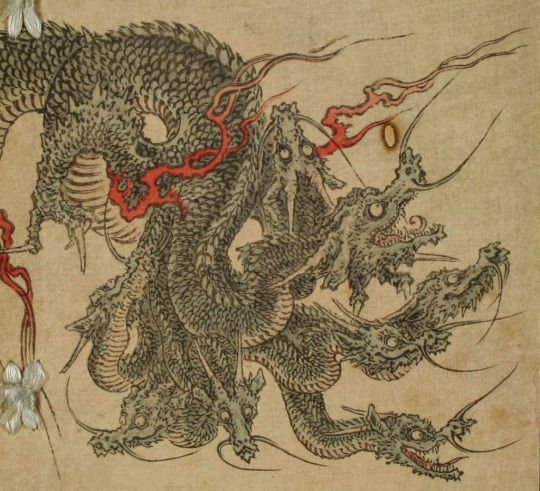
Others could even be slain by mortals, yet still had intelligence and formidable capabilities. Indeed, Japanese dragons were a bit more snake-like than those of China, and one, the winged hai riyo, had feathers.
The differences among Asian dragons are at times startling, yet collectively they have many things in common, such as vast god-like powers, wingless flight, for the most part a good temperament, and generally having a very serpentine shape. Taken together, we can see just how different Asian or Oriental dragons are compared to those of Europe. Indeed, some have gone to far as to state that Chinese dragons in particular should not even be called dragons at all.
And yet…Asian dragons have more in common with European dragons than you might think.
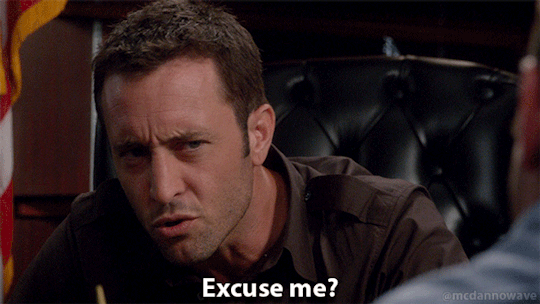
1. Serpentine shape? Both most Asian dragons, and some European dragons (especially the worm variety) have serpentine aspects. Indeed, the European Worm dragon is basically a giant snake with bad breath.
2. Treasure? While stories of dragons hoarding buried treasure are well noted in Greek myth, Norse mythology and Beowulf, the ancient Chinese believed in the fu-ts’ ang lung, a type of dragon that kept great treasures in the Earth. Also, male Chinese dragons were known to each keep a pearl.
3. Gods? Remember all those stories about maidens being offered to dragons in western folklore, such as in the story of St. George and the Dragon? Notice the word again; offering. Sounds a lot like people are making human sacrifices…to gods. Indeed, Veles, a Slavic god, was said to be able to appear in the form of a dragon.
Nevertheless, their differences are so great that we need to go down a different route than we did in my previous article on dragons. Its one thing to figure out how wyverns and worms came about.
Its another to figure out how Asian dragons could have arisen.

How would they have evolved?
Could they have evolved?
And what would real Asian dragons look like?
Read on…
2. HERE BE FOSSILS

In a previous article on the Serpent of Eden, I mentioned a prehistoric snake named Najash rionegrina. If you went back in time, say 95 million years ago, and went on a nature hike, chances are you might run into this ancient serpent. At first, you might think that it was a typical run of the mill snake.
That is, until you spotted its legs.
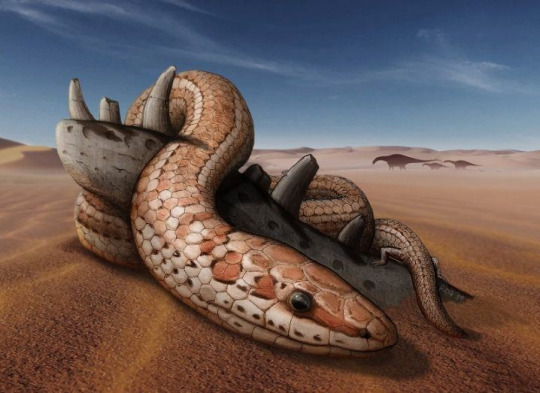
Unlike any snake today, Najash rionegrina had legs and even hips! It was not unique; there were several prehistoric snakes that sported legs as well. Over time, however, these legs and hips vanished, courtesy of evolution. Nevertheless, the question has to be asked; why did they have legs in the first place?
Answer: because snakes evolved from lizards.

Over time, the ancestors of snakes lost their forelimbs, their bodies changing from generation to generation until…the first snake hatched.
But what if the ancestors of snakes took two avenues?
What if some continued to evolve a serpentine shape…yet retained their forelimbs?
Perhaps such a creature could have evolved into an Asian dragon.
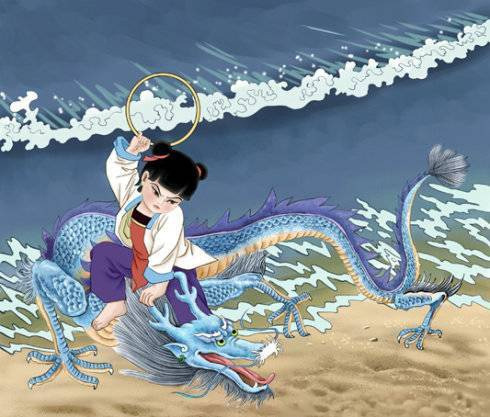
We could also invoke another species of group of lizards that evolve serpentine shapes separately from those that evolved into snakes, courtesy of convergent evolution. Perhaps these could have retained their limbs, and thus given rise to Asian dragons.
However…there is a problem.
Hair.
Repeat: HAIR!
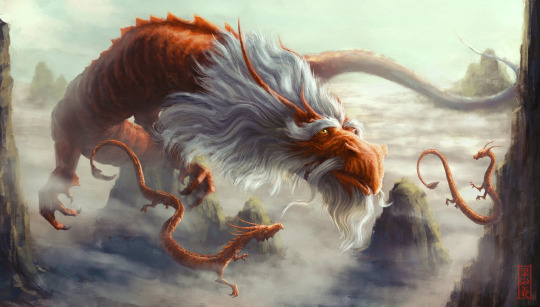
Asian dragons have hair!
They MUSTACHES and BEARDS, for crying out loud!
Surely, reptiles could never evolve into Asian dragons, because…once again…HAIR!
And no reptile has hair…right?
Wrong!

Geckos have super tiny toe hairs, which they use to stick to hard surfaces. Without these tiny hairs, they’d have no ability to climb or hang from horizontal surfaces. If Geckos could evolve hairs, why couldn’t dragons?
We could also postulate that dragons evolved from Stem-mammals, aka protomammals, aka mammal-like reptiles, aka paramammals, aka synapsids (didn’t think to add that last one in the previous dragon article when I first posted it on Tumblr. Its on there now), creatures that had both reptilian and mammalian traits.
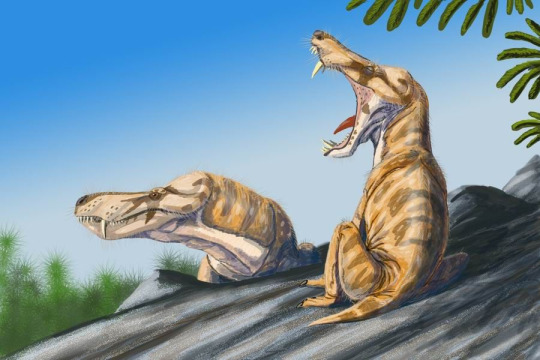
Such creatures are not only thought by scientists to be the ancestors of mammals, but one of them, Thrinaxodon, seems to have had whiskers. Perhaps we could imagine a protomammal (that name sounds the coolest so I’m going with it) Asian dragon, perhaps even one that survived to the modern era, a living fossil.
However, its one thing to postulate an ancestor, another to postulate that such animals could evolve into bonafide Asian dragons.

But would they have been able to?
In my previous article on dragons, I noted that fire breathing dragons could have achieved flight by having both wings and hydrogen bladders. The former would most likely evolve by means of having their arms or forelimbs turn over many generations into wings, the same process that gave both birds and bats their wings. Its not totally impossible that a mutation could arise that would allow for the existence of a regular 6-limbed dragon, but a 4 limbed wyvern variety would be more biologically sound. Thus, if Asian dragons were real, and had wings…then they would have had to have evolved them from forelimbs or arms ages ago. If they had the growth stages noted in Chinese folklore (more on them later), then we would have to postulate that the arms of any individual dragon would have to turn into wings as they aged (more on this later too), but let’s focus for now on a hypothetical species of, for all intents and purposes, wyvern Asian dragon. Such a creature could only fly if it had both wings and hydrogen bladders. Course, we could also imagine an Asian dragon that glided like a modern “flying dragon” lizard (as depicted in “Dragons: A Fantasy Made Real”), or an Asian dragon that makes its lower body concave and glides like a modern flying snake, or even perhaps one that uses a combination of skin flaps, body alteration and hydrogen bladders. However, for true flight, we would have to surmise a wing and hydrogen bladder combo in order for an Asian dragon to take flight (keep in mind, Chinese dragons attain wings only in their adult form).
However, there is one potential problem.
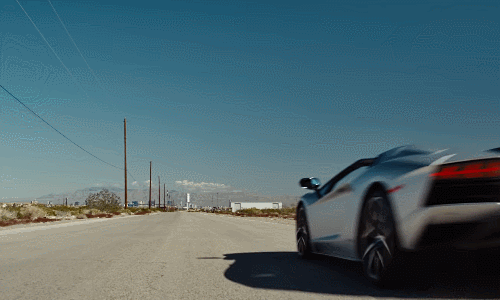
What would happen if such a dragon tried to fly…with its wings being located at the far front of its body, instead of closer to its middle?
Keep in mind, the length from its wings to the tip of its tail is FAR greater than the length from its wings to the tip of its snout. Indeed, not only is it far greater than the wing to tail length that is usually seen in depictions of European dragons, but their legs are also further back on their bodies than those of European dragons as well. Flying European dragons also have less serpentine, less wiggly midsections.


I’m no expert in aerodynamics, but it seems to be that such excess length and weight behind the wings, along with a less stable, more wiggly midsection, could potentially cause issues with flight. Having hydrogen bladders almost throughout the length of the animal could help like it would with a European dragon, but…it would be far better if the animal simply had two pairs of wings instead of one, with a second pair on its lower body.
But of course, that’s just silly. After all, there has never been a four-winged vertebrate, right?
Wrong!
Microraptor, a tiny dinosaur that lived in the early cretaceous, was highly bird like, sporting both feathers and wings. Indeed, if they had survived to the modern era, you might mistake them at first glance for a bird (I know, I know, scientists now distinguish between avian dinosaurs (i.e. birds) from non-avian dinosaurs (regular dinosaurs), but I’m old fashioned; I’m calling the former birds). Though not a true flier, Microraptor was a natural glider. Compared to most dinosaurs, it was highly unusual.
Even more so when you count its wings.
Um, all four of them.

Its hind legs actually evolved into a second pair of wings. Microraptor could still use its wings to climb trees and the like, but they were also used for gliding.
Oh, and by the way: Microraptor was not alone.
Indeed, there was an entire group of four winged dinosaurs called microraptorines.

True, these dinosaurs didn’t fly, but its not hard to imagine these animals evolving true flight if their kind had lived longer, or of they had not gone extinct.
If this trait evolved once…couldn’t it evolve again?
Couldn’t convergent evolution produce another species, indeed another group of animals, that likewise bore four wings? Couldn’t they have lived longer, perhaps eventually evolving true flight?
Both are very possible.
But what about the unusual growth stages?
To my knowledge, the only kind of Asian dragon that had a series of strange, long growth stages is the Chinese dragon, so we could forgo such growth stages and simply imagine a dragon that didn’t experience having them.
But what if they did?
Could such growth stages be realistic?

Well, some animals do experience unusual growth stages before they develop into adults, indeed far more so than we see in many species (including ours). Most frogs start out as tadpoles, which lose their tails and gain limbs (as well as different skin colorations) with age. Butterflies start out life as caterpillars. Giant Panda newborns look FAR different from that of an adult, being pink and having little hair. Baby crown of thorns starfish look about a similar to an adult crown of thorns starfish as you do to a blue whale. The growth stages of a jellyfish can likewise involve a lot of serious shape shifting. Given this, we can’t conclude that a real Asian dragon wouldn’t likewise undergo the unusual series of growth stages as indicated in Chinese folklore. We…might have to tweak things so that such creatures would hatch with wings (instead of being limbless like a snake) that would eventually grow powerful enough for flight, but then again, tadpoles don’t have limbs, yet as they grow into a frog, they do develop them.
Now, some may counter, saying that in one of its growth stages, a dragon gains both the head and the scales of a fish. Surely, a reptile can’t grow a fish’s head and scales, right?
Well, that’s what I was getting to.
You see, at first, the Chinese dragon (and other Asian dragons that share its physical characteristics) seems, at first glance, to be an impossible hybrid, on par with Pegasus and centaurs. Indeed, it is a combination of 8 animals and 1 supernatural being:
1. “Horns” (actually Deer antlers, but I guess “horns” sounded better).
2. Snake’s neck.
3. Feet: partially tiger’s feet.
4. Head of a camel.
5. Eagle talons instead of true claws.
6. Carp’s scales
7. Cow ears (unlike those of other cows, the ears of a dragon don’t work; it actually needs its horns to hear).
8. Clam belly
9. Demon eyes.
Well, it seems like we should ditch the idea of a real Asian dragon, right? I mean, being a hybrid of 8 animals and a demon? Surely no such creature could exist, right?
Ladies and gentlemen, its time to think 4rth dimensionally.
Although hybrids like that mentioned above do not occur in nature, there are animals in the wild that, at first glance, look like a hybrid monster of world myth. Consider the Duck billed platypus; it has both the feet and bill of a duck (hence the name), a beaver’s tail and an otter’s body. It looks like a hybrid of the three…and yet isn’t. This false hybrid nature is further reinforced by the fact that it lays eggs, but even then, it’s not a mammal-bird hybrid.

The Okapi of Africa looks like a strange antelope whose legs were replaced by a mad scientist with those of a zebra, yet its neither antelope or Zebra. Indeed, its closest relative is the Giraffe.

Given all of this, we could imagine a reptile evolving that could likewise be a false hybrid. Instead of having a camel’s head, it would have a head somewhat similar in shape to that of a camel. Instead of having deer antlers, it could sport horns or horns that bear some semblance to antlers (as I pointed out in my previous article on dragons, horned serpents exist). Instead of having fish scales, its scales could be simply fish like. Instead of having eagle talons, it might instead have claws that somewhat resemble eagle talons. We might forgo some hybrid aspects (tiger-like feet, demon eyes (more on them later), etc.), but a dragon that looks like a hybrid of several animals…and yet is not…is not entirely impossible.
But what about demon eyes?

When it gets dark, some animal’s eyes glow. This is a reflection of light caused by a part of the eye called a tapetum lucidum. This reflective surface is found in many a critter. Humans, sadly, don’t have one, and thus we miss out on all that glowing eye fun. However, the glowing effect is not merely for show; an eye with a tapetum lucidum can see more efficiently in darkness.
Could you imagine a dragon having such eyes? A multi-ton, serpentine dragon having a glowing stare? Sounds like something out of the Twilight Zone.
Couldn’t this lead to people describing a dragon’s eyes as…demonic? Quite possibly.
But what about long life? Surely, no living creature can live for thousands of years, right?
Once again…WRONG!

Large sponges are thought by scientists to have a lifespan stretching up to over 23 centuries.
Over 2300…years.
Likewise, though Red Sea Urchins can generally reach a century, some could potentially reach more than twice that age…without having the nasty effects of old age.
Then there are immortal jellyfish, creatures that have the ability to reverse the aging process, to the point where they become a polyp (just a step above larvae). After this is done, they can start the normal aging process again, eventually returning to adulthood. It’s not impossible that such a creature could potentially live forever.
Given this, we cannot state that nature couldn’t have done the same trick in reptiles.
But what about intelligence?

As stated in my previous article on dragons, its not impossible for reptiles or even dinosaurs to have evolved human level intelligence.
Thus, we seem to have everything covered.
That is…save for magic.

How could an animal make itself invisible, or both shrink to a tiny form and grow so large that they reach the top of the sky? How could they control and manipulate the weather??? Surely, these are capabilities that no animal could ever hope to evolve…right?
Actually…yes, this is true.
However, this doesn’t mean that they wouldn’t develop these abilities by other means…
3. THE DRAGON IN THE HAT TRICK

In my previous article titled “What if Fairies Were Real”, I did my best to keep it as scientific as possible in determining how such creatures could have both arisen and gained their paranormal powers. Trying to do so without invoking magic was an amazing intellectual exercise, and it led to a very interesting conclusion when it comes to fairy magic.
You see, if fairies were real, and we didn’t invoke the supernatural to explain their miraculous powers, then the only way they could have such powers without calling upon the supernatural…was if their “magic” was actually super science.
Let’s imagine, for sake of argument, that I told a tribe in the Amazon, one not familiar with modern science, about J Robert Oppenheimer, the father of the atomic bomb.

Let’s say that I told them that he created a weapon that could not only engulf miles and miles of jungle in flame in a split second, that not only could it cause an ungodly windstorm, that not only would it make a giant mushroom-shaped cloud…but that it would also poison air, soil and water. Imagine if I told them that this weapon could vaporize people, leaving behind a permanent imprint of their shadows. Let’s say that I told them that his weapon brought down a mighty tribe in the far East, and that he went on to say “Now I am become death, the destroyer of worlds.”

What would this tribe think J Robert Oppenheimer was?
They might think he was a god, some other kind of supernatural being, or a freakishly powerful sorcerer.
Indeed, if such a tribe had somehow bore witness to Oppenheimer testing this bomb (with safety goggles of course, so that they wouldn’t go blind), saw it go off…they might start worshipping him.
That’s the power of technology. If its advanced enough, it can appear to a more technologically primitive people like magic. Indeed, there are people in Africa that think that cameras can take a person’s soul (a belief based on the images that appear on photos). Some Tibetans likewise don’t like the idea of being photographed, preferring to keep their souls in their own bodies. Cameras are nothing more than tools used to take photographs, no sorcery involved, yet to some cultures in the world that are not familiar with the science…they are magic.
Thus, if fairies existed, and had the unusual abilities attributed to them in folklore…then the only (non-supernatural) way they could pull off said abilities is through advanced technology.
Could it not be the same for the Asian dragon?

At first, it seems impossible: after all, they’d just have four sets of wings, right? No hands, let alone opposable thumbs, and thus no way to make technology, right?
Um…not so fast.

Remember, we went through several scenarios for how Asian dragons could evolve, not all of which involve them being true fliers. They could have either had skin flaps like a flying dragon, or made their lower bodies concave in order to glide like a flying snake. Indeed, they could have done both, perhaps also with hydrogen bladders. This would free their upper limbs from becoming full fledged wings. Combined with an opposable thumb and advanced intelligence (augmented by a several millennia lifespan), Asian dragons would have the ability to make technology, even highly advanced technology. In another scenario, where dragons went through growth stages similar to those mentioned in Chinese mythology, but with the arms and legs eventually becoming wings, they would have arms for several thousand years. If they had opposable thumbs during that time, then they would be able to both make and use tools for many centuries before their arms turned into wings.
Thus, dragons could potentially make advanced technology.
But would their technology surpass our own?
As I mentioned in my fairy article, technological advancement wasn’t at the same level for every species of ancient human. For example, Homo sapiens had a faster rate of technological advancement than both homo erectus and homo egaster. Indeed, when one considers the speed of human technological development, one can see that it has significantly increased in pace. Just think: The last known surviving veteran of the American civil war (Albert Henry Woolson, 1850-1956), saw the arrival of telephones, radio, television and nuclear weapons. This is a guy who fought during a time when most warships were still made of wood and people were using telegraphs. He had lived during the same time period as the Old West, the age of Jesse James and the Gunfight at the O.K. Corral.
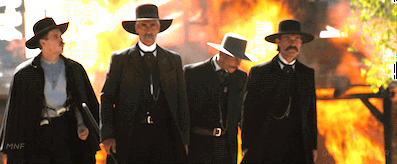
And what happened 13 years after Woolson died?
We landed on the moon.
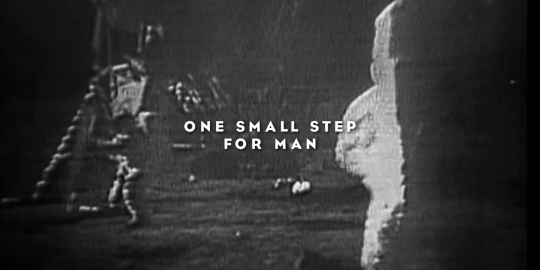
Given all of this, we could therefore imagine a species of Asian dragon that had an even higher rate of technological advancement than even humans have had. This could have partially occurred either due to having a more advanced brain, or perhaps due to experiencing an ever-increasing rate of technological progress earlier than humans did (Imagine what would have happened if Neanderthals had undergone a similar growing rate of technological advancement long before we did? Imagine how history would have been if Neanderthals tested the first airplane…while we were starting to build pyramids?). We could also imagine Asian dragons, as a species, predating our species, perhaps considerably so, and thus having more time to technologically advance. A head start in the technological race could have given Asian dragons the means to develop super science long before humans invented the wheel.
However, there is something else that could potentially fuel this technological advancement.
Long life.
As I mentioned previously, Chinese dragons are said to take 3000 years just to grow from a newly hatched snake into a full-fledged adult dragon. Let’s imagine that all Asian dragons had took this long to grow into adulthood. Let’s imagine that they could live even longer than this (remember, it takes them 3000 years to reach adulthood. It’s not their entire lifespan).
How would this affect both science and technology?
Consider some of the brightest minds in human history: Isaac Newton, Max Planck, Albert Einstein, Socrates, Copernicus, Nikola Tesla, Thomas Edison, etc. There are many titans of learning that have lived throughout human history, altering our world in a variety of ways with their inventions and discoveries.
But what do they all have in common?
Among other things, they didn’t live for thousands of years.
Instead, they only lived for decades. Not millennia, not centuries.
Decades.
But what if such great geniuses could live for thousands of years? What if they aged slowly, keeping the Grim Reaper away for countless ages?
What could they have discovered?
What could they have invented?
Imagine if Isaac Newton was still alive, conversing with modern physicists. What else could he have discovered besides the Law of Gravity? What amazing experience he could bring to scientific experiments! What if Nikola Tesla was still alive today? If he was, would we have warp drive, transporter technology and androids indistinguishable from Katy Perry (come on scientists, make it happen!) by now?
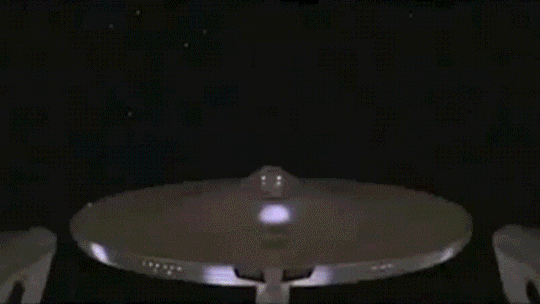
Now imagine what they could do, what they could discover…if they lived for thousands and thousands of years?
This, along with perhaps a more advanced brain (or beginning to speed up their technological advancement long before humans did the same), could lead to Asian dragons developing a far superior technology than humans, so much so that they could pull off feats that humans would mistake as magical. Perhaps they could even develop highly advanced technology while we were still in the cave. Perhaps they could use holographic technology to fool people into thinking that they were shrinking or growing, or have tech that could bend light, making them invisible, or even technology that would be capable of controlling weather. Perhaps they could develop technology that could enable them to truly fly without wings (which might lead some humans to embellish tales about them, to the point where they were said to have wings). Perhaps they could have technology so impressive that they could alter their genetic codes, enabling them to grow wings, without having to lose their arms and paws (and thus their opposable thumbs) in the process. If they had this level of technological sophistication at any point in human history…most people would consider them magical. Only recently would some propose a more science-based answer to their impressive paranormal feats.
And how would people in the ancient or prehistoric world think when encountering these “magical” dragons? How would they view such colossal creatures that seemed to have unearthly, occult powers?
Most would probably view them as gods.
And how were some Asian dragons viewed?
As gods…

Indeed, this would be even MORE likely than it would be with the existence of real fire breathing dragons, and the chances of people worshipping the latter as gods would have been HIGH. Also, a dragon cult involving Asian dragons would be FAR more long lasting than one for fire breathing dragons would be; as mentioned in the previous article, fire breathing dragons would most likely have wings instead of arms, and thus would not have technology. Humans would eventually overtake their physical prowess by means of technological advancement. However, as noted above, Asian dragons wouldn’t have this problem. Human technological advancement wouldn’t be able to overcome far superior dragon technology (we’re talking potentially space age, Star Trek level technology), let alone superior tech whose progress was growing faster and faster. You may have had some humans question these dragon “gods” and perhaps have some that tried to rebel against them, but without divine intervention (no pun intended), Asian dragons would always squash them like bugs, using superior size, strength…and technology.
We could, however, also imagine dragons foregoing wanting people to worship them and simply just invade human held lands, which they would be able to win with ease. Human empires in real history didn’t want those they conquered to worship them as gods; they wanted tribute. Even empires that venerated their emperors or kings as gods didn’t want their entire population to be viewed as divine. They did, however, assert their authority, often brutally. We could perhaps see humanity doomed to a near endless perpetual yoke, serving their dragon emperors, void of hope. Such hope might be rekindled, however, if dragon nations and culture began to change, to the point where dragons began giving some human lands back (just as has occurred in our history, with the decline of European empires in the 20th century). Indeed, dragons might even want humans assimilated into their culture, just as Americans tried to assimilate Native American tribes into their culture.
We could, however, also consider the possibility of dragons exterminating humans. No doubt countless people groups would be wiped out during dragon imperial campaigns, but an actual genocide of all humanity would also be possible.
Either way…dragons would be the dominant life form on the planet.

Its interesting to try and figure out what life would be like if dragons were real, but one needs to remember that, in a sense, we actually DO live in a world where “dragons” exist. Indeed, you can see such dragons now and again on documentaries, and possibly even at your nearest Zoo…
3. THE KING OF KOMODO
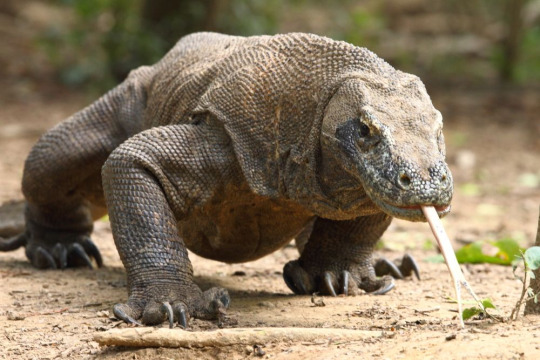
Komodo dragons are…frightening. I mean, I-just-messed-in-my-pants level of frightening. Its easy to understand why, considering that they are lizards…that average 155 pounds and 6 and a half to over 9 feet long. Indeed, they can reach up to 300 pounds and ten feet in length. Combined with both being able to hit 11 mph and having a venomous bite (yes, you read that correctly; Komodo dragons actually have venom glands in their mouths!), these creatures can be the stuff of nightmares.
At one time, they were also the stuff of myth and legend.
Tales of titanic lizards stalking the forests of Komodo piqued the interest of some in the industrialized world. Most would have thought that such tales were…just that, tales. Indeed, they might have considered these lizards as fictional as ogres, unicorns and centaurs.
And yet…in 1912…the skeptics had to eat crow.
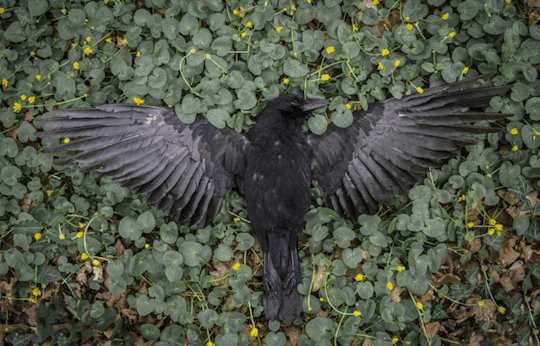
The monster was revealed to be real.
But why is it called a dragon?
Because the original tales told of a monster that somewhat resembled a dragon.
Its easy to see why; like the European dragons of lore, Komodo dragons are huge, reptilian and have forked tongues. True, they don’t have wings or fiery breath, but then again, in world myth and legend, dragons come in many forms, some of which are lizard like. Indeed, some depictions of St George fighting his dragon in art make the dragon look like an oversized lizard. Also, most dragons in myth and legend are not depicted as breathing fire. Indeed, some have lethal bad breath instead. Now, Komodo dragons don’t have lethal breath, but being a carnivore and having no desire to buy toothpaste and a toothbrush at their local pharmacy…I’m guessing that their breathe is pretty ripe. However, considering that they have a poisonous bite, one could see how this, combined with their bad breath, could eventually lead to the creation of a mythic dragon with lethal bad breath. Over time, embellishment could potentially lead to even fire breathing. One could imagine even a flying firebreather, or perhaps even a winged reptilian god, being developed due to spreading rumors of Komodo dragons combined with embellishment.

But were Komodo Dragons the originators of both European and Asian dragons?
Um…not likely, considering the distance between Komodo Island and places like Asia and Europe.
However, it is, for all intents and purposes, a true dragon, the only one we have.
However, there was once another, a creature that made a Komodo Dragon…look like a Komodo Gecko.
4. THE GIANT RIPPER

In ice age Australia, there once lived a dragon. A giant monitor with attitude, this dragon ruled the Outback with an iron claw. The first Australian Aborigines lived in fear of this terror, a creature that proved hard to kill, a monster impervious to boomerangs and shaman curses.
I’m talking, of course, about Megalania. This animal was quite similar to a Komodo Dragon…but at 26-30 feet long and weighing over 2 tons, it was much larger, capable of taking down rhino-sized prey. If it still lived in Australia today, it would be a terror to both humans and livestock. Indeed, if it had survived to the modern era, explorers might very well have labeled it the “Australian Dragon”.

And what dragon would be complete…without legend?
Curiously enough, though Megalania is long extinct, the creature lived on in Australian Aboriginal folklore, where it is called “Mugoon-galli”. It was said that the Mugoon-galli used its tail to bring about sandstorms.
Does this latter power make you think of Asian dragons? Specifically Chinese dragons?
It should, considering that Chinese dragons likewise could bring rain by flicking their tails.
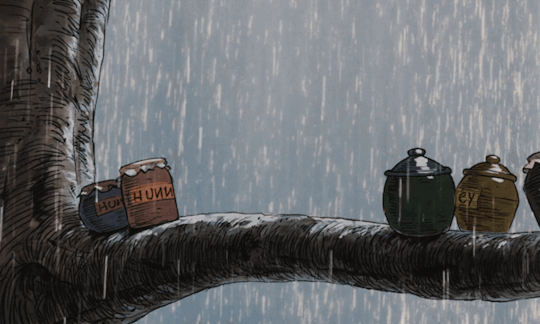
Now, this doesn’t mean that Megalania was the source of the Chinese dragon. It does, however, reveal an even more dragonesque aspect of Megalania, a power that bridges prehistory with legend.
For all intents and purposes, Australia was once home to “dragons”. The Land Down Under is now their graveyard, a land whose dragons have faded into dust and fossils.

Or have they?
Its curious to know that, for over a hundred years, even into modern times, a colossal lizard has been sighted in Australia…
Perhaps, there is still a dragon lurking on the Earth today, abiding in a deep cave, waiting for humans to foolishly wander into its lair…

Sources:
“Dragons: A Natural History” by Dr. Karl Shuker, 86-93
“Dragonslayers: From Beowulf to St. George” by Joseph A. McCullough, 6-72, 77-78
“Quest for the Unknown: Man and Beast”, by Reader’s Digest, 108-10, 112-13
“Chambers: Myths and Mysteries” by Kate Sleight (Editor), 46-48
“The Ultimate Encyclopedia of Mythology” by Arthur Cotterell and Rachel Storm, 456, 468-69, 474-75
“Dragons” By Kris Hirschmann, 36-40
“Mysteries of the Unknown: Mysterious Creatures” by Time-Life books, 20-21
https://www.google.com/books/edition/Dragons/Kg3D0LtNnN8C?hl=en&gbpv=1&dq=Chi%27ih+muh+dragon&pg=PA38&printsec=frontcover
“Forest of the Vampire” by Charles Philips and Michael Kerrigan (consultant Dr. Elizabeth Warner), 124-25, 130
“Supernatural Beings from Slovenian Myth and Folktales” By Monika Kropej, 34
https://sirtravisjacksonoftexas.tumblr.com/post/648294161269866496/what-if-dragons-were-real
https://sirtravisjacksonoftexas.tumblr.com/post/644038696642985984/was-satan-the-serpent-in-the-garden-um-yes-and
https://sirtravisjacksonoftexas.tumblr.com/post/645391302162268160/a-journey-into-the-strange-world-of-useless
https://www.nature.com/articles/s41467-017-02788-3
https://www.mentalfloss.com/article/85126/15-examples-most-dramatic-metamorphoses-youth-adult
https://www.pbs.org/wgbh/nova/evolution/four-winged-dinosaur.html
https://www.livescience.com/47307-how-geckos-stick-and-unstick-feet.html#:~:text=Geckos%20can%20stick%20to%20surfaces,tiny%20microscopic%20hairs%20called%20setae.&text=Scientists%20already%20knew%20that%20the,der%20Waals%20force%20kicks%20in.
https://www.bbc.com/news/science-environment-28295571
https://www.newscientist.com/article/dn24218-dinosaur-in-a-wind-tunnel-tests-feathered-flight/
“The World Encyclopedia of Dinosaurs & Prehistoric Creatures” by Dougal Dixon, 244
https://www.merriam-webster.com/dictionary/avian%20dinosaur#:~:text=%3A%20a%20bird%20when%20considered%20as,flit%20around%20our%20backyards%20today.%E2%80%94
https://animals.sandiegozoo.org/animals/okapi
https://www.livescience.com/27572-platypus.html
https://www.npr.org/templates/story/story.php?storyId=96414364
https://www.britannica.com/science/tapetum-lucidum
https://www.newscientist.com/article/2090150-this-deep-sea-creature-could-be-the-worlds-oldest-living-animal/
https://today.oregonstate.edu/archives/2003/nov/red-sea-urchins-discovered-be-one-earths-oldest-animals
https://www.amnh.org/explore/news-blogs/on-exhibit-posts/the-immortal-jellyfish
https://teara.govt.nz/en/diagram/5355/jellyfish-life-cycle
“The Cultural Dimension of International Business” by Gary P. Ferraro, 2002.
“Tibet Travel Adventure Guide”, by Michael Buckley, 1999, 24
https://www.minnpost.com/mnopedia/2019/09/minnesotan-albert-henry-woolson-was-the-last-surviving-civil-war-veteran/
https://www.history.com/topics/inventions/telegraph
https://www.history.com/this-day-in-history/shootout-at-the-ok-corral
https://www.pbs.org/wgbh/americanexperience/features/james-jesse/
https://www.gresham.ac.uk/series/the-rise-and-fall-of-european-empires-from-the-16th-to-the-20th-century/
https://www.history.com/news/how-boarding-schools-tried-to-kill-the-indian-through-assimilation
https://www.livescience.com/51086-komodo-dragon-bite-facts.html
https://www.livescience.com/27402-komodo-dragons.html#:~:text=Komodo%20dragons%20are%20the%20largest,the%20Indonesian%20island%20of%20Komodo.
http://www1.lasalle.edu/~zelenenkic1/dragonscale_species.html#:~:text=Western%20Dragons%20have%20bat%20like,the%20tip%20of%20their%20wings.
“The Beasts That Hide From Man: The Search for the Last Undiscovered Animals” by Karl P. Shuker, 204-07
“Smithsonian Institution: Animal” by David Burnie and Don E. Wilson (Editors-In-Chief), 420-21
“Prehistoric Life” by DK Publishing, 332, 431
https://www.google.com/books/edition/Adventures_in_Cryptozoology_Volume_1/cJYREAAAQBAJ?hl=en&gbpv=1&dq=cryptozoology+megalania&pg=PT26&printsec=frontcover
https://folklorethursday.com/myths/harbingers-of-heaven-dragons-of-earth-and-sea/
3 notes
·
View notes
Photo

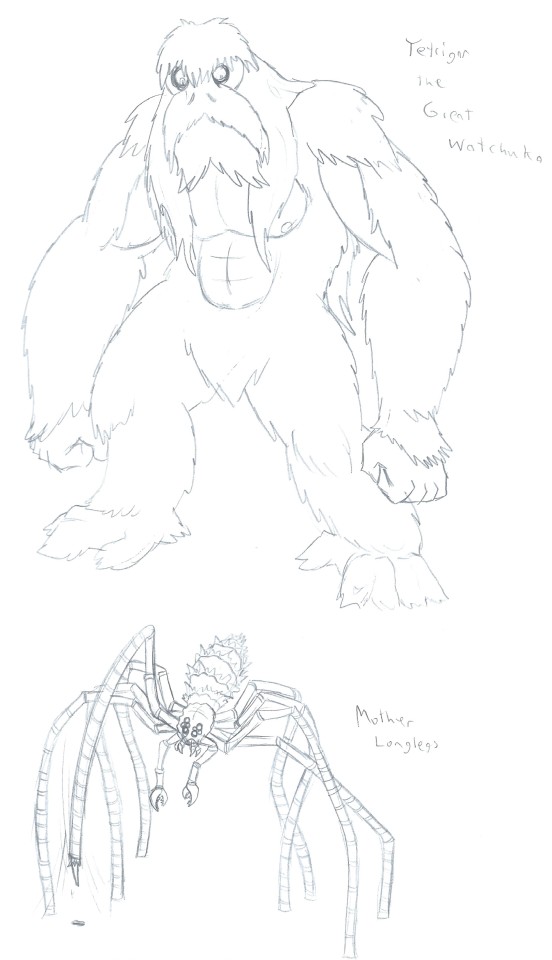

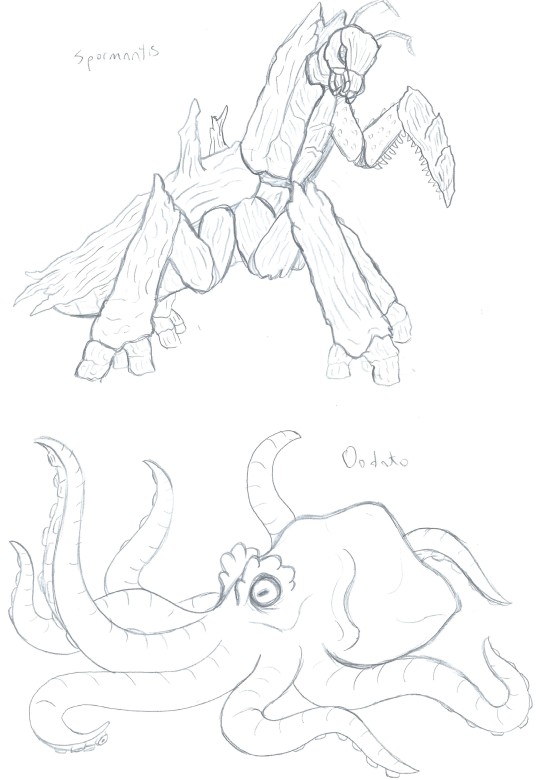



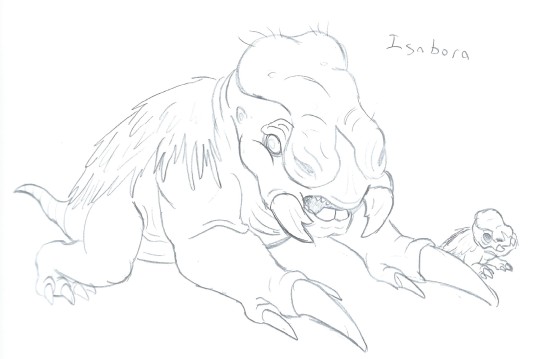


Godzilla Gang Revised: COMPLETE Titans of the Atomic Ice Age
I know what you’re thinking: didn’t you already see these guys? Well, yes, mostly. BUT - while looking up unmade Godzilla kaiju to find a name for a monster that’s going to show up later down the line in this project, I ended up on a Wikizilla rabbit hole and found out that some of my favorite unmade kaiju from Kong: Skull Island ended up in the tie-in comics, which is canon enough for me to include them in the Godzilla gang. Add to this the fact that my dumb ass self forgot to include Behemoth initially and, well, it just felt like I should redo this post to include the four monsters that weren’t in the original one. So here’s the unabridged, expanded, complete set of the Titans of the Atomic Ice Age!
King Kong: a bipedal ape almost as large as Godzilla himself, Kong’s kind flourished during the Atomic Ice Age, ruling their ecosystem with a mix of brain, brawn, and electro-static shocks from their fingertips. The end of the nuclear winter led to their decline, however, and now they are reduced to a single specimen. However, while King Kong may be the last of his kind, he won’t go down without a fight, and continues to rule Skull Island despite multiple coup attempts from his kaiju neighbors.
Yetrigar: also known as the Great Watchuka, Yetrigar is an aberrant mutation of the (not-so-great) watchukas, a species of white-furred apes that inspired the myth of the yeti. While the average watchuka stands twenty feet tall, Yetrigar is far larger, and has protected his people from many threats for thousands of years. (Based on both Yetrigar from the Marvel Godzilla comics and the Great Watchuka from The Godzilla Power Hour.)
Skauroch: Plants suffered greatly during the Atomic Ice Age, and thus evolved many aggressive tendencies to survive. Near the equator, it was common to find many species of plant that developed a symbiotic or even parasitic relationship with fauna. Such is the case with the Skaurochs, a species of enormous water buffalos whose backs are a considered fertile ground by various species of swamp grass. Luckily, the Skauroch is capable of producing enough energy and nutrients to keep both itself and its floral parasite sated. (Based on the Sker Buffalo from the Monsterverse.)
Mother Longlegs: an enormous arachnid, Mother Longlegs benefits from a strange sort of natural camouflage, as its legs allow it to blend in with the bamboos forests it calls home. Of course, it was specifically adapted for the enormous breeds of bamboo that grew near the equator during the Atomic Ice Age, and found its habitat dwindling as the age came to a close and bamboo stopped growing quite so large.
Rhinosaurus: Enormous and heavily armored, Rhinosaurus has the thickest skin of any mammalian kaiju, making it one of the most durable giants to roam the earth. Despite the vast weight of its heavily armored frame, it can still run at impressive speeds, striking enemies with tremendous force.
Vagnosaurus: Infected by some hideous parasite, Vagnosaurus is a heavily mutated prehistoric whale with a nasty temperament. While it suffers from its infection, the parasite does have some benefits, as it will lash out with its tendrils at anything that threatens its host.
Spormantis: A colossal insect whose hide resembles a rotting tree, Spormantis has some of the most perfect camouflage of any Atomic Ice Age kaiju. Had the radioactivity it needed to maintain such large size not subsided during the end of the Atomic Ice Age, Spormantises would still populate the globe, instead of being stuck on their current sanctuary of Skull Island. (Based on the Spore Mantis from the Monsterverse.)
Oodako: also known as the Mire Squid (despite being an octopus), Oodakos are massive cephalopods that could survive in both fresh and saltwater environments, and were even hardy enough to live on land for several days before drying out. Believed to be the source of the kraken myth (as well as other many-tentacled monster legends), Oodako are far more aggressive than other large cephalopods, and appear to enjoy eating human beings.
Deserpentis: a colossal sea snake, Deserpentis is not the most impressive kaiju from the Atomic Ice Age, though it does possess a very powerful venom. (Based on the Giant Sea Snake from King Kong Escapes.)
Psychovulture: Despite a superficial resemblance to pterosaurs, bats, and the flying reptiles of the Atomic Era, Psychovulture is actually a flying lizard, with a wing structure unique to itself. Its name comes from its manic attitude, which in turn is caused by the omnivorous reptile’s addiction to Skull Island’s intoxicating soma berries. (Based on the Psychovulture from the Monsterverse, as well as various flying monsters that fought King Kong over the years.)
Sirenjaw: An enormous and ancient crocodilian, Sirenjaw is camouflaged by a variety of plant species that are specifically adapted to grow in between the reptile’s armored scales. Swamp-weeds, algae, and even trees grow from the reptile’s flesh, giving it the appearance of an island when idly floating on the surface of the water. The tricky carnivore lies in wait of smaller creatures that try to rest on its reedy back, gobbling them up just when they think they’ve reached safety.
Tortigneus: This tortoise kaiju is one of the few species that actively seeks out minerals to eat, which its specialized digestive system then processes into molten hot slag that can be spewed from pores on its back as a defensive weapon. Excess slag will also seep onto its shell and cool, providing the reptile with a carapace that is both exceedingly durable AND fertile for various plant life. Palm trees have been known to grow on the creature when it lies dormant, disguising the beast through its centuries-long torpor. (Based on the Magma Turtle from the Kong: Skull Island tie-in comics.)
Stagrida: An aquatic insect, Stagrida the “swamp locust” could be considered the water-dwelling counterpart to Mother Longlegs, as its spindly limbs disguise it as sunk trees and marsh plants while it lurks in search of prey. (Based on the swamp Locust from the Kong: Skull Island tie-in comics.)
Isabora: Enormous rodents, the Isabora is a burrowing creature that adapted to bore through ice-encrusted landscapes. It does so by superheating a strange bulging organ on its head, which in turn melts through the ice above it. (Based on the Ice Borers from Godzilla: The Series.)
Behemotus: as enigmatic as he is colossal, the enormous Behemotus is one of the more peaceful kaiju to walk the earth, preferring to live alone in quiet solitude rather than seeking out other monsters to battle with. The giant is particularly tender towards plant life, nurturing vast forests with its life-giving radiation - which may in part stem from the monster’s rough years in the Atomic Ice Age, where plant life was scarce and vulnerable to the elements.
80 notes
·
View notes
Text
“The Sultan of Finback Isle” Excerpt
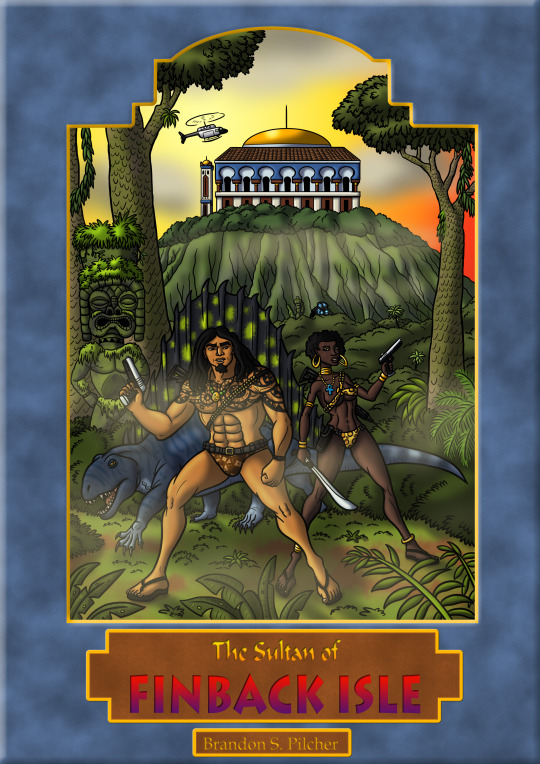
The below is an excerpted chapter from my self-published novelette The Sultan of Finback Isle, which you can purchase in Kindle format on Amazon.com.
After slamming his palm on the start button, Abdullah Kalua lowered himself to his PWC’s dashboard, popping his bronze-brown knuckles over the handles. He hooted a lyric from his favorite Hawaiian victory song as the untethered watercraft flew off from the flank of the FBI boat, the latter disappearing as a gray-and-blue speck on the azure surface of the equatorial Pacific.
He grinned with pleasure and rocked his head about, cheering for the breeze that flowed through his wavy black mane. His destination may have lain twenty degrees south and twenty-five degrees east of his father’s home archipelago—as indicated on the dashboard’s coordinate panel—but it felt fantastic to return to the tropics after almost three decades. Balmy as Los Angeles had been, its Mediterranean climate was too dry and the California current too frigid for Abdullah’s tastes.
Monique lagged ten yards behind him. He could hear only the faintest hint of her PWC’s jetting out water.
“Got to speed up, babe!” Abdullah shouted. “You’re being too cautious again!”
She sped up a mere three yards closer to her husband. “We’re taking enough risk with this already!”
“C’mon, girl, that’s what makes it fun! Admit it, who wants to enter this dude’s house the ‘proper’ way now?”
“Well, you sure don’t!”
From the horizon ahead rose a sliver of green beneath a halo of clouds. It swelled into a mass of overgrown hills and ravines grooving down from a flat plateau, with a blinding white band of beach at the bottom. To the left, the beach gave way to rocks beneath a low black cliff.
Holding his hands over his eyes in imitation of a surveying explorer, Abdullah hummed out loud an iconic tune from a certain movie score that John Williams had composed in the early 1990’s. “There it is! Magellan’s Finback Isle! Da-dun, da-da-dun, da-da-dun bong, bong, bong—”
Monique roared out an annoyed groan. “You sure chose the corniest theme for the moment!”
“What else would you have chosen for this particular island? How about the one from Jurassic World? Bong, da-dun, da-dun, la-la, la-la…”
He continued to “sing” out tracks from both films’ soundtracks until the splashing of his wife’s accelerating watercraft drowned out his voice. With a vengeful snicker from Monique, the starboard of her PWC’s bow thrust into the portside of Abdullah’s stern with a banging bump. One of his hands slipped off a handle over the jolt.
“Oh, for fuck’s sake! These are government property, remember? Our taxes pay for their repairs!”
Monique pointed ahead with widened, horrified eyes. “Then you really should—watch out!”
The hull of Abdullah’s PWC grazed over the slanted face of a black rocky outcropping. The craft soared high into the air until its bow smashed into the cliff’s upper lip. Flung off his mount’s seat, Abdullah collided face-first onto the coarse trunk of a stout and palm-like giant cycad. The fronds of tree-ferns, club mosses, and pandanus trees clawed him as he bounced all the way down to the mossy floor.
A flock of scarlet honeycreeper birds fluttered in panic beneath the treetops. One screeched before disappearing in a burst of red feathers when a yellow-and-black blur intercepted it in one leap. Abdullah blinked thrice and squinted up from where he lay without spotting the creature again. He wouldn’t know for sure, but there weren’t supposed to be any wild cats on Finback Isle. Right?
Abdullah gave his arms and legs a shake to wake them back up. He winced from the strain of a hundred sores as he raised his torso up to his knees. All those scratches and cuts had ruined the tattoos on his shoulders and pectorals, erasing slices of the Arabic calligraphy that flowed parallel to the swirling Hawaiian lines. The kapa designs on his swim briefs had taken on almost as much damage.
He pounded a fist on the spongy earth. “Allah damn you all. These’ll cost over half a grand for my old uncle to fix. You hear that, local plant life? Half a goddamned grand!”
His voice bounced between the trees until it subsided under the rhythmic buzzing and whining of insects interspersed with the squawks of Polynesian bird life. One thing he did not hear was even the faintest note of his wife’s PWC. Had he fallen so deep into the island’s jungle, far away from shore? Or had the watercraft turned off? Abdullah prayed that Monique had switched it off herself rather than getting into an accident like his own.
Not that she’d dare get herself into an accident like this. The woman had always been too cautious.
Ferns rustled over the crackling patter of paw-like feet over the dead leaves of the forest floor. From the shadows within the undergrowth scintillated a pair of bright green, cat-like eyes. Below them glistened a maw of elongated canines drenched wet with saliva.
Abdullah dug his fingers into the moss beneath him and froze still, the sweat chilling to ice on his brow. There weren’t supposed to be any cats on this island. Much less big cats, like leopards or jaguars. Monique had promised him so, and she wouldn’t misinform her man like that. Would she?
It did not stride to him on the underslung legs of a cat, or any other mammalian creature. Instead, it crawled forth on legs bent outward like those of a crocodile. Its hide, golden orange with black mottling, sparkled with a hairless and pebble-wrinkled texture from the dapple of sunlight overhead. As the animal encircled him, swaying its tapered tail, it brushed his skin with the sniffing nostrils on its long square-chinned muzzle.
This was no cat. This was a lizard with the fangs of a cat, and possibly a dog’s sense of smell. Abdullah had seen something like this in a natural history museum when and he Monique first dated. He forgot its complicated name, but the sign had identified it as living in the Permian period tens of millions of years before the earliest dinosaurs roamed the earth. And it was almost certainly a carnivore that ate—
With a cry partway between a reptilian hiss and a cougar’s shrill roar, the creature launched itself onto Abdullah’s breast. He seized its neck with his left hand, his arm muscles buckling in their struggle to keep the fanged jaws away from his own jugular. Extending his right arm down to his tactical knife, he wriggled his fingers to pull it out by the hilt until the beast punctured his biceps with its front talons.
He pounded against the monster’s flanks with his knees. It did not even flinch once. Its jaws snapped an inch closer to Abdullah’s face with each heartbeat as the strength drained from his limbs. If he had no way of getting this savage prehistoric holdover off him, then he might as well have his mission doomed before it even began. Chief Fawal and his whole force would get off scot free, and everyone they ever wronged—not least of whom was his Monique’s own younger brother, as well as the boy’s husband—would rest in heaven unavenged.
With a cracking bang, followed by a spurt of blood and brains, the leopardine lizard rolled off Abdullah to lay limp on the earth. There stood over it the ebon silhouette of a tall svelte woman with a thick crown of Afro hair, steam still slithering out from her Glock’s barrel like a serpent.
Abdullah giggled, half nervous and half thankful. “That’s my girl! I must say, though, that was a risky shot. If you missed, you could’ve killed me.”
Monique lent her hand out to her husband with a smirk. “And you said I was too cautious.”
“I never said you always would be.”
He straightened his back and brushed specks of dirt and blood off his body. “So, what happened to you in the meantime? You found a safe landing place?”
After slipping her pistol back in its holster on the thong of her leopard-print bikini, Monique unsheathed a machete from her opposite hip. “A little to the north, near some old ruins on the beach. Stay close and keep your eyes on the foliage at all times.”
She crouched beside the dead creature’s tail and hacked it off in a double chop.
“What is that thing, anyway?” Abdullah asked. “Some kind of extinct lizard?”
“Don’t you remember seeing these at the museum on our first date? It’s a gorgonopsid. They’re more related to us than to lizards.”
“Right, they’re mammal-like reptiles, from before the dinosaurs.”
Monique hauled the gorgonopsid’s tail onto her shoulder. “They’re not reptiles, either. They’re synapsids, as are all mammals.”
Abdullah shrugged. “Whatever. They should have died out alongside their mainland cousins two hundred and fifty million years ago. Wait, I did get that number right, didn’t I?”
“Almost. Give or take an extra million years or so. Let’s get going, we don’t want another hungry Paleozoic relic overhearing us in this jungle.”
#writing#fiction#excerpt from my book#paleozoic#prehistoric#lost world#gorgonopsid#polynesian#african-american#poc#woc#black woman#interracial couple#spy thriller#adventure#police brutality#black lives matter
9 notes
·
View notes
Text
Revenge of the ATOM Create a Kaiju Contest: ENTRY ROUNDUP!
Twenty three wonderful monsters were submitted by twenty three wonderful people to the second ATOM Create a Kaiju Contest. Let’s give them all their due before the winners are announced, shall we? Just as with last time, I went ahead and sketched them all, because I’m a masochist who enjoys hurting his carpal tunnel ridden hand, and because I feel like it gives every monster a fair shake.

@bugcthulhu starts us off with Rohobaron, a hot-headed retrosaur/crocodile chimera that can superheat his body to ignite the landscape and incinerate enemies with a touch. Despite the fairly nasty powers, Rohobaron actually has a somewhat sweet personality, being quick to make friends and staunchly loyal to his allies, though his short fuse can also make him drag his friends into danger.
Design-wise, Rohobaron’s got a very solid concept, with those dynamic fuckoff-big arms and horns being the most obvious selling points, along with little dashes of character like the gharial lump on his nose and the heavily armored plates on his chest. You wouldn’t confuse him with the other retrosaur kaiju in the series, that’s for sure. The idea of a monster this burly and gnarly looking being a sweetheart is the kind of “appearances can be decieving” thing that ATOM thrives on, and giving a kaiju powers that reflect its personality (in this case, hot-headedness = heat powers) is always cool. There are some minor continuity issues with the bio given what’s going to happen in ATOM Vol. 2, but Rohobaron doesn’t lose points for not reading a book that isn’t fully written yet. All in all, a wonderful submission!

@akitymh is next with Charlotte, a retrosaur of the herbivorous persuasion. Exactly what clade of herbivorous retrosaur it belongs to is intentionally unclear, as Charlotte has a thagomizer like an armored goliath, but also shares some quirks with horned goliaths, despite lacking horns itself. A missing link, perhaps? She’s also unusually large for an ATOM kaiju, which suggests she’s been around for a long time - reinforced by her calm and sometimes protective nature, as the older kaiju tend to be less fight-focused than the young ones in ATOM.
Charlotte’s design is very interesting, and I like the idea of having some retrosaurs who don’t quite fit into any one given clade - it makes it more like real life taxonomy to have some oddballs here and there. Her smattering of armor plates gives her and interesting look, and I like how her long hind legs allow her to go bipedal as well as walk on all fours. Her neutral personality also makes her stand out among the mostly fight-happy monsters of ATOM. All in all, a solid entry!

We continue the prehistoric theme with @ariccio50‘s marvelous armored retrosaur, Scolosurtr! An genetically modified armored goliath, Scolosurtr’s most prominent features, as you have no doubt noticed, are the two massive yet hollow spikes on his back, which are connected to the kaiju’s two massive hearts and occasionally shoot projectiles when he’s pissed (though this is painful for the reptile to do). Scolosurtr can superheat his blood as a defensive mechanism, which in turn allows him to melt the ice that often clings to his body in the frosty countries he tends to roam. The armored monster is very easily stressed out, particularly by his fellow kaiju, and will even bite his tail in an attempt to calm down.
Scolotsurtr’s design is rad as hell - I love a giant monster that looks like a mountain, and the mini-volcano shaped shoulder spikes are such a cool pokeon-esque design feature (I say that as high praise). His icy, antisocial personality is a fun contrast with his fiery look, and the personality tick of biting his own tail to calm down is a very endearing quirk. Also, can we appreciate how wide this fella is? Just an absolute unit. His powerset allows him to stand out from the mostly tooth and claw fighters of ATOM, while still being balanced thanks to the pain it causes him to use it. A very well rounded entry!
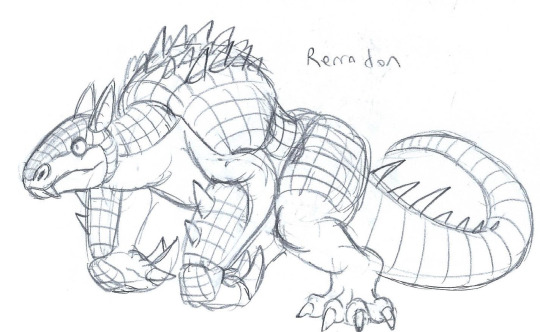
@scatha5 brings us our fourth entry, the enormous armadillo Rerradon! Shy but willing to fight when backed into a corner, Rerradon is a formidable enemy when roused, with thick armor keeping him well defended and enough claws and spikes to make other monsters rethink their choice to attack him.
Mammalian kaiju are, as many have noted, very rare, and Rerradon is an excellent contribution to their small but growing ranks. I’m a sucker for armadillos too, and Rerradon keeps all the traits I love about them while still having a unique and monstrous look to him. My favorite detail on this fella, though, is one of his alternate names - “Dracula’s Weird Dog.” Why? Well, because of the fact it references some obscure monster movie trivia - both in the 30′s when the Bela Lugosi Dracula first came out, and the 50′s when it was prominently re-released, armadillos were not a particularly well known creature, and would have been considered exotic and strange by most Americans. As a result, the film-makers of Dracula put an armadillo in the vampire’s haunted castle, banking on viewers thinking it was some sort of strange monster. And, at the time, it works - most people who saw the film had no idea what the strange lizard rat thing was, though I imagine anyone living in the Southwest probably wondered why the hell an armadillo was in Transylvania. Obscure references to monster movie minutia are exactly ATOM’s jam!
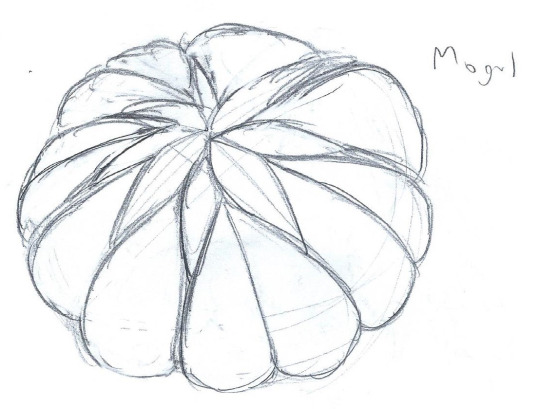
Our next monster is @quinnred‘s flying saucer mimic, Mogul! An enormous descendent of the sea cucumber, Mogul needs both Yamaneon radiation and water to survive, and causes a great deal of chaos in the process of feeding until scientists realize dehydration can drive the creature away, While too simple in nature to exhibit much of a personality, Mogul’s mysterious nature and accidental imitation of interstellar travelers allows it to leave a mark nonetheless.
An incredibly clever design that I wasn’t quite skilled enough to capture in my sketch (you should always check out the links to the originals here, folks), Mogul is tailor made to a great 1950′s style monster story. You have the initial mystery with an inherent red herring built into it (i.e. everyone thinking the creature is initially a UFO), the startling discovery of what we’re really dealing with, and a creative solution that scientists come upon when studying the monster’s biology. While Mogul’s simple nature means it might have trouble in a kaiju vs. kaiju story, it’s incredibly well suited to a stand alone tale, the kind that could really flesh out ATOM’s giant monster crisis.

@cerothenull brings us our first big arthropod, Acanpetax the enormous assassin bug! A gnarly insect that wears the bones of kaiju its killed as armor, Acanpetax is a cruel and vicious hunter of its fellow monsters, though over time its vicious ways soften.
Kaiju bones turn to Yamaneon when they die, and Yamaneon crystals are shaped in a way that would give them a very coarse, spiky texture (if my muddied memories of Geology 101 are correct, anyway), making the insect’s armor even more evil-looking, which is great for a monster that (initially) plays a Heel role. This guy has the makings of a great villain monster, and I like that, in ATOM fashion, he still manages to get a heroic turn over time, especially the implication in his bio that it comes from communicating with the spirit of the snake monster whose skull he currently wears as a hat. It’s delightfully weird! A big bug with a solid visual to work off of and a great role and character arc baked into his personality, Acanpetax is a strong contender!

(no seriously you really need to check out the original postings, my sketch here does not do this fella justice)
@evolutionsvoid also shows ATOM’s big bugs some love by bringing the fungus infested Megaria into their ranks! Originally a larval cicada that was parasitized (and likely to die) by a fungus, Megaria’s sudden transformation into a kaiju brought her into a more balanced symbiosis with her parasite. Neither an attacker or a protector, Megaria is a spectator of kaiju fights, and will eagerly watch her fellow giants battle without participating herself. She is a force to be reckoned with when backed into a corner, though, as Megaria’s fungal growths have given her a variety of sound-based abilities, many of which she is not fully in control of.
It hasn’t been touched on in ATOM much yet, but plants and fungi are affected by Yamaneon radiation in a very similar manner as animal life, and Megaria presents a fun opportunity to explore that. The idea of a parasite and its victim becoming partners post-mutation is really interesting, and Megaria’s design is just as interesting to look at as its concept is to think about. Her fungal symbiote also gives her a great number of unique powers and abilities to make any fight scenes she’d be in unique, while her personality as a kaiju spectator allows her to stand out (I can see her making cameos in other stories as a background monster). Another solid contender for the contest!
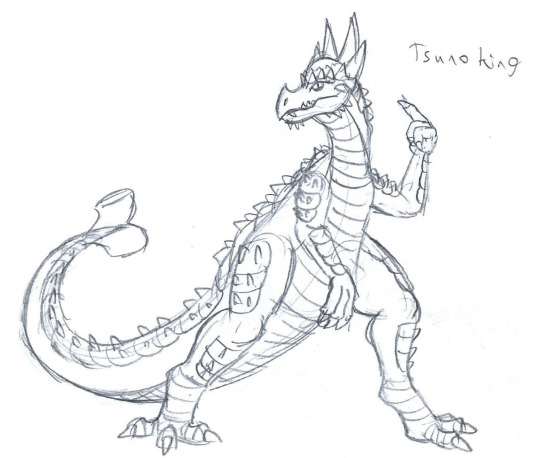
@highly-radioactive-nerd takes us back to the past with the helmeted retrosaur Tsunoking! Technically a paleo tyrant, Tsunoking sports several defensive adaptations that are similar to those sported by many herbivorous retrosaurs as well, though perhaps his most notable adaptation is the crown of horns that gives him his name (see, he’s pointing to it in my sketch! It’s a nice crown.). A proud but honorable monster, Tsunoking is a powerful fighter who prefers to fight similarly powerful foes, and is also rather fastidious when it comes to personal hygiene.
I love the chimeric mix of features here - the dragon-y snout, the pachycephalosaurus dome skull, and the ankylosaurus tail club all give Tsunoking a very unique silhouette among the many carnivorous retrosaur kaiju in ATOM, and would no doubt provide some fun speculation for ATOM’s paleontologists. The vanity gives his heroic personality a fun flaw to work with, and I likewise think his Samurai-esque honor code could be interesting to work with in a story. A wonderful prehistoric monster to add to the roster!
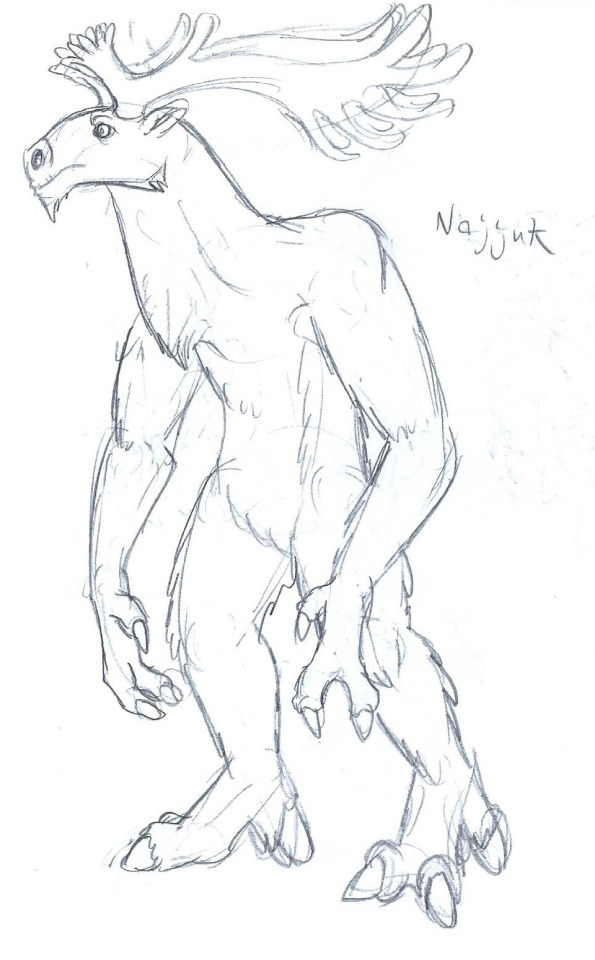
@dragonzzilla brings us a very strange and melancholic monster, the bipedal caribou Najjuk! In addition to its striking humanoid stance, Najjuk emits a great deal of toxic gas as a byproduct of its Ice Age biology, and its inability to cope with warm temperatures results in it becoming incredibly aggressive and dangerous whenever it leaves its arctic environment.
There’s a clear (but not too heavy handed) metaphor for global warming in the threat Najjuk presents, as the warming of the earth leaves it less cool spaces to seek refuge in, and the caribou’s methane emissions actually contribute to the problem that’s destroying its home. The monster also has a great deal of pathos built into it - a herd animal that is the last of its kind, forced to live in a habitat that’s too inhospitably cold for most other kaiju to tolerate, making it an incredibly lonely monster. Combine the symbolism and pathos of its plight with a very striking mammalian design and you have an incredibly unique entry into ATOM’s menagerie of monsters!

@virovac gives us a truly bizarre entry with one of the most clever descriptions I’ve read so far, the low budget monstrosity known as Nematerror! A mutant roundworm, Nematerror is one of the monsters considered too simple in nature to have a personality, though it still seeks what it needs with enough voraciousness to be considered a threat.
The really ingenious thing about this entry lay in its description, as virovac chose to describe how the creature would look if it were an actual prop in a low budget 50′s monster movie. Made from a garden hose, stuffed socks, and some other trash, Nematerror is the kind of cornball monster puppet idea that could only be carried out in the atomic era of creature features, the kind that Joel and the bots would have a field day with. There’s even a description of how its hose nozzle could be turned around to represent a nematode’s malleable mouth parts! It’s very clever, and definitely the sort of idea that suits ATOM’s love of cheesy monster movies.

@skarmorysilver brings us the old and crusty mole monster, Gnomoran! A sadistic curmudgeon, Gnomoran is a deeply unpleasant monster to face in battle. With venomous spit and caustic pus secreted from its many facial sores, Gnomoran’s natural weapons give it a revolting edge, which is made all the more nasty by its mean-spirited personality. However, Gnomoran is also in immense pain, as its healing factor has been thrown off kilter, giving it the kaiju equivalent of cancer.
The design of Gnomoran is excellent. Like many of the previous ATOM CKC entries, it plays on the secret connection between ATOM and my Midgaheim stories, in this case using my mole-derived Gnomes/Dwarves as a starting point, and working back to show their more explicitly rodent-like roots. The star-faced mole nose, long beard, big ol’ horn, and lumpy tumors all give him a bunch of iconic design details, and his power set of venom and caustic pus is uniquely gross. He’s a great Heel monster, with a nasty attitude to match his equally nasty looks and power set, all while still having the ability to be sympathetic. Figuring out how to explain why his healing factor has gotten so out of whack presents a bit of a continuity hurdle - Gnomoran has symptoms of both cancer and old age, which normally aren’t possible in an ATOM-verse kaiju, so that would need a good explanation. But design and personality wise he’s a damn good fit!

DA user Lediblock submitted the chicken/retrosaur hybrid Galiente! Made by splicing DNA from Tyrantis’s blue nemesis, the Terror, with that of a chicken, Galiente is a panicky, defensive monster who is tormented by the knowledge that other kaiju find his flesh ridiculously delicious.
Galiente’s design is a freakish mix of reptile and bird that goes for body horror, with a patchwork mix of scales, feathers, and raw skin, twisted limbs, and, somewhat inexplicably considering the two animals it’s a mix of, velociraptor feet. The result is a very tortured looking creature, which fits its nervous and tragically aggressive personality - Galiente is a monster that picks fights because it fears it will get hurt if it doesn’t make the first move. There’s a sadness that goes along with its wretched appearance and attitude that’s very sympathetic. The monster’s backstory would probably need some tweaks, though - the many ways it is tied to Tyrantis specifically seem a bit unnecessary, with the “people mistake it for Tyrantis” angle being a bit implausible (and somewhat redundant, given Tyrantis already has two enemies that are his twisted doppelgangers as is), and I’m not sure a monster hunting organization would recruit a chicken farmer into their ranks, no matter how good his business savvy is. Still, a plausible backstory wasn’t one of the contest requirements, and design and personality-wise Galiente is a very solid concept.
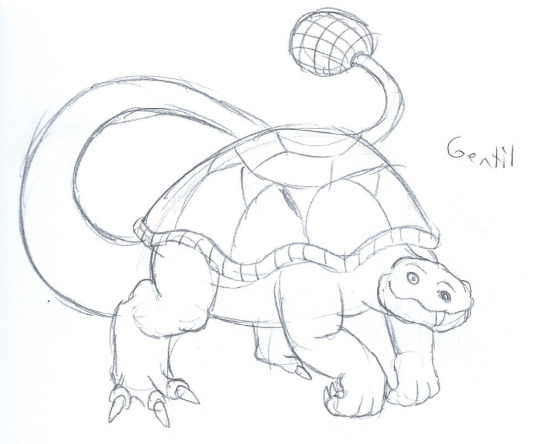
@protagonistprepblog submitted Gentil, an armored monster with a sweet disposition! Gentil is designed to be something of an earth elemental, with a mix of traits from various creatures associated with that element. He sports a healing mist/aura, a poison blast from his mouth, venomous claws, and the standard kaiju powers of strength and nigh invulnerability. He’s also smart enough to join an organization specifically to help people.
Gentil has a very striking design, albeit one that’s (intentionally) hard to place taxonomically. He would probably be the result of genetic modification in ATOM’s world, though the way his creator described him as the kaiju of the Earth Element makes me think the intention is for something more magical in origin. The sweet personality suits his name very well, and as far as monsters go he’s very friend-shaped. Most of Gentil’s information was shared with me by his creator via DMs, and he’s a very thoroughly developed concept, albeit one that seems to fit a story of protagonistprepblog’s creation a bit better than ATOM. A wonderful submission nonetheless!

@dinosaurana submits the nuclear gator known far and wide as One-Armed Louie! Already a menace when he was just a big, one-armed alligator, Louie became a true menace when he survived the explosive failure of a nuclear power plant, resulting in a number of wild mutations that, among other things, allow the massive crocodilian to assume a semi-bipedal stance. Louie’s aggressive nature and history of getting into mischief ironically make him a pretty good kaiju to have around, as he will more often than not turn those shit-starting instincts on his fellow giants and end up keeping them in line as a result. Even Jim Madson, a gator hunter turned kaiju wrangler, can’t help but appreciate how the “rat bastard” has become something of a boon to humanity since becoming freakishly large.
One-Armed Louie brings a true crocodilian to ATOM’s cast, which warms my reptile loving heart. One could argue that the retrosaurs are all just very weird crocodiles, of course, but while that may literally be the case, most of them don’t look like crocodiles - they don’t have that pure crocodile vibe - and Louie makes up for their deficiency by being very much a big ol’ crocodilian. Big ol’ gators and crocs are a giant monster movie archetype just as much as big ol’ bugs, and Louie gives them their due very well. He also looks absolutely hardcore, which fits his aggressive “rat bastard” personality to a T. A very solid entry for the contest!
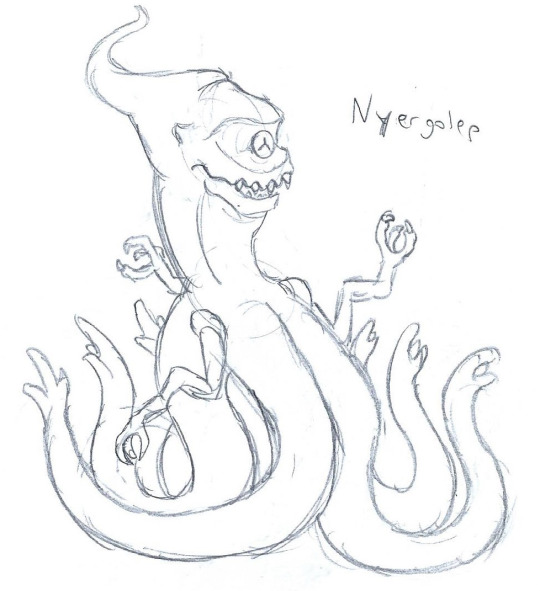
@iamthekaijuking submitted the modified martian monster Nyergolep! Originally from the planet Mars, Nyergolep was kidnapped by the Beyonder Alliance and experimented upon until it developed psychic powers. Designed to be a sort of anti-Kemlasulla, Nyergolep is a nervous wreck who hates combat and desperately wants to escape the Beyonders.
Nyergolep’s design takes a lot from Kemlasulla’s, albeit with a lot of twists - fitting for the “Anti-Kemlasulla.” Its tentacles are much more massive than its legs, with the roles of each set of limbs being reversed (i.e. using tentacles for locomotion instead of grasping, using legs for grasping instead of locomotion), and it lacks all of the armor Kemlasulla has, including the bony plates protecting the head and eye. The result is a very fragile looking martian, the squishy mage to Kemlasulla’s rough and rowdy fighter. I like the wiggly line of its upper jaw the best - don’t ask me why. “Nergle’s” design is a little too closely tied to Kemlasulla’s for me to give full marks in that category, though I do love that wiggly mouth. Its personality is pretty damn good though, fitting with the other shell-shocked war veterans in the Beyonder Kaiju army.
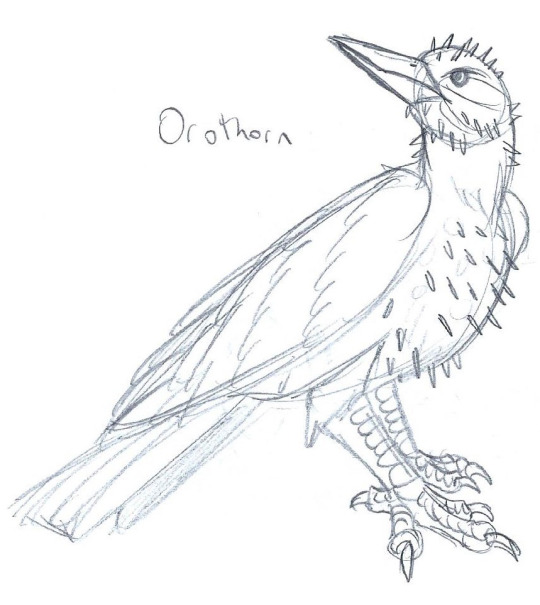
@dragonseeker-rex submitted the cactus/bird hybrid Orothorn! In a story that feels like it came from one of the more light-hearted Twilight Zone episodes, Orothorn began as a normal gilded flicker that happened to befriend an cowboy actor named Mick Auricson (specializing in playing cowboys was A Thing in the 1950′s) after Mick nursed the little bird back to health. An ill-placed dynamite explosion near a hidden Yamaneon deposit not only supersized Orothorn, but fused it with some of the nearby cactus (violent bursts of Yamaneon radiation can do this kind of shit on occasion), creating a massive, thorny-skinned bird monster with a heart of gold and a fondness for humans in general, and Mick Auricson in particular. The feeling is mutual, as Mick even commissioned a special kaiju-sized scarf for the bird to wear (which I forgot to illustrate, whoops!).
Birds are lacking in ATOM’s roster (we don’t even have any in the core 50 files), and Orothorn is a unique take on the concept, with cactus thorns sticking out from between his feathers. Him being a kaiju that specifically emulates the heroic behavior of a cowboy (actor) is also adorable and so very in line with ATOM’s sensibilities, it’s genuinely cute and I love it. It’s a giant bird with cactus thorns that wears a scarf and thinks it’s a cowboy, how can you not love that?
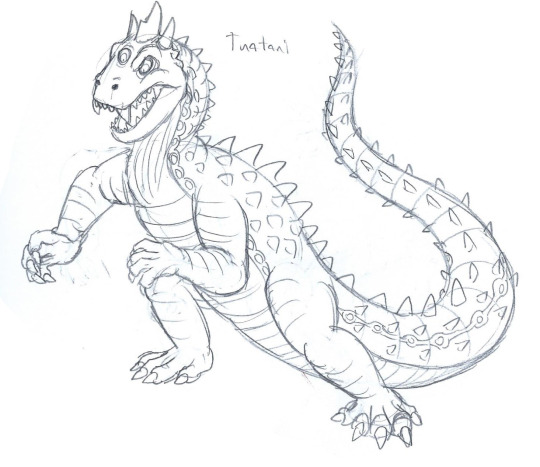
Dracosaurus Rex submitted the enormous tuatara kaiju Tuatani! Initially mistaken for being a retrosaur, this three eyed reptile can shoot energy blasts from his third eye and carries a virulent disease in his blood that infects any who encounter it. A lonesome creature, Tuatani is very placcid during the day but will go on nightly rampages from time to time, apparently in a fit of vengeful despair at being the only one of his kind.
A clear homage to the Beast from 20,000 Fathoms, Tuatani nevertheless has a lot to set him apart from his inspiration, with a multi-eyed motiff that sports an actual third eye as well as several eyespots. The loneliness that drives him to lash out is a nice nod to both the film and the short story that inspired it, and his status as a Tuatara descendant would make him the last modern reptile missing from ATOM’s pantheon. The nature of the disease in his blood would need some elaboration, as the immune systems of ATOM kaiju are very strong (being able to regenerate white blood cells almost instantaneously makes it very easy for them to learn which micro-organisms need to be destroyed), but it’s an interesting power for the monster to have. A very solid entry!

@umbercario-sablesable gives us the giant silkworm, Munchy! A caterpillar whose head, jaws, and true legs are covered in a metal alloy. Munchy lives to eat, and with metal jaws he can eat quite a lot of things! While the insect will eat any non-living matter it comes across, it prefers not to eat living things, which makes it one of the few monsters who finds buildings more appetizing than the people inside them. Though Munchy has little desire in this world outside of sating its gluttony, it isn’t a malicious creature, and so long as your house isn’t in its path you have little to fear from the monster.
Silkworms have a short but important role in kaiju history, as Mothra’s larva form is based on a type of silkworm, so making a silkworm kaiju plays into a very grand tradition. Munchy goes for a more morally neutral route than Mothra, though, taking the voracious appetite of a caterpillar and exaggerating it to a proper kaiju scale. The simplicity of it actually makes for a rather unique kaiju, as Munchy’s single-minded desire to eat as much non-living matter as possible makes it a very different sort of antagonist than the somewhat more complicated kaiju villains of ATOM. Add to that the massive variety one can find in silkworms and you have a recipe for a very good monster!
(Apologies at the possible inaccuracy of my illustration - google could not find images of the wakabayashi landrace species of silkworm that he is specified as being, so I had to just look up silkworms and hope I was somewhere in the correct ballpark - and then I missed the detail about his first pair of false legs being long enough to give him a bipedal stance so uh... well I think he’s still pretty cute, that counts for something?)
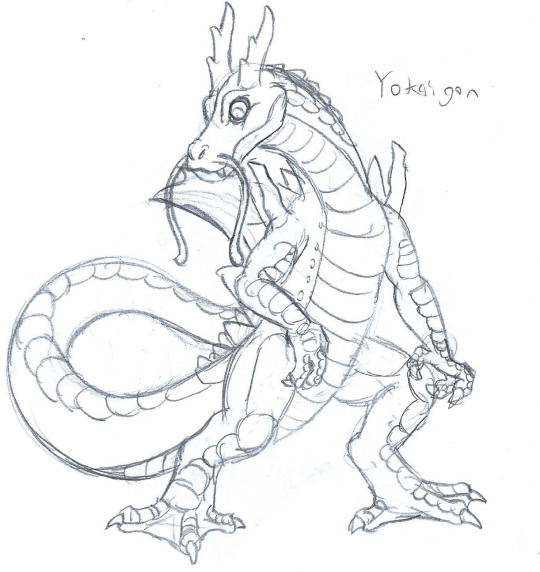
Sir K brings us the lung/ryu kaiju Yokaigon the Incredible! Mistaken for a retrosaur by its initial discoverer (we certainly have a lot of scientists in ATOM who are very bad at taxonomy), Yokaigon is capable of affecting the weather like some of the few psychic kaiju in ATOM’s setting, suggesting latent psychic powers on the reptile’s part. He is also able to absorb electricity and may or may not be able to fly. Introverted and antisocial by nature, Yokaigon isn’t driven to seek out combat like most other kaiju, and prefers to be left alone.
With a backstory inspired by an absolutely terrible dub of Varan the Unbelievable!, Yokaigon is a fun homage that winks at some of the mythic creatures that existed in ATOM’s universe long before the series takes place - a surviving Loong/Ryu, much as Kraydi is a surviving dragon and Gorgolisk a surviving basilisk. While Loongs aren’t covered in my Midgaheim Bestiary project, I have done sketches of what they would be like before, and it’s fun to see them mixed with a suitamation look here. I don’t think a sea monster necessarily needs to make storms to still feel appropriately mythical, but the hydrokinetic ability to summon sea storms is plausible enough in ATOM (I’ve got a Yeti who summons blizzards in roughly the same way, so who am I to judge?). And people always want more dragons.

@toothlessloveshiccup brings us the prehistoric arthropod Insectra! Despite appearances, Insectra isn’t actually an insect, but actually a much older arthropod that is more closely related to horseshoe crabs. Forged in a conflict between natives and an encroaching military force in the South Pacific, Insectra protects the local human civilization of her island home while repelling those who would destroy it. With EMP blasts in her already powerful arsenal, she is a formidable enemy for anyone, man or kaiju, to face.
Insectra’s design has a great Hanna Barbera bug-monster vibe, the sort of thing you could see going toe to toe with the Herculoids or Space Ghost. It’s simple in some places, but to the point, with great big spears for hands and wide, stompy feet. Her motivation as a protector is a great nod to Mothra, while having an even more explicit anti-imperialist bent to it. A very well rounded entry for the contest!
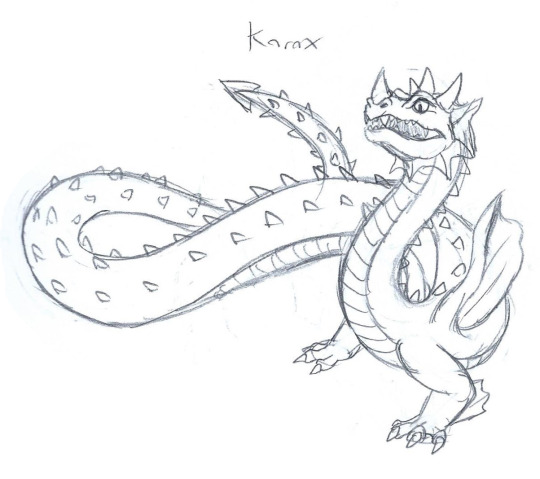
Shadyserpent brings us the draconic reptile Karax! Another mythic creature sneaking into the world of ATOM, Karax is a serpentine beast whose vestigial wings allow it to fly (Yamaneon’s ability to defy gravity doing some of its most implausible work yet). With terrible venom and a better-than-average healing factor, Karax is a deadly opponent, the dragon-like beast is thankfully more focused on collecting shiny objects than waging war against man or kaiju, though his desire to add to his hoard sometimes causes trouble.
See? I told you people like dragons! Karax’s design retains the ATOM-approved level of scientific plausibility, with his wings being fairly simple/under-developed compared to the more fantastical dragons of my Midgaheim stories. He retains the prehistoric monster vibe that other Midgaheim survivors like Gorgolisk and Kraydi have, towing the line enough to fit in with ATOM’s menagerie while still winking at the mythic side of things. His fondness for shiny objects is both a nice nod to his draconic nature and a fun character quirk that can get him into the kind of trouble that stories are made of, and the fact that he’s also got more than a few references to the classic giant monster movie Reptilicus is also a plus! A very good entry.
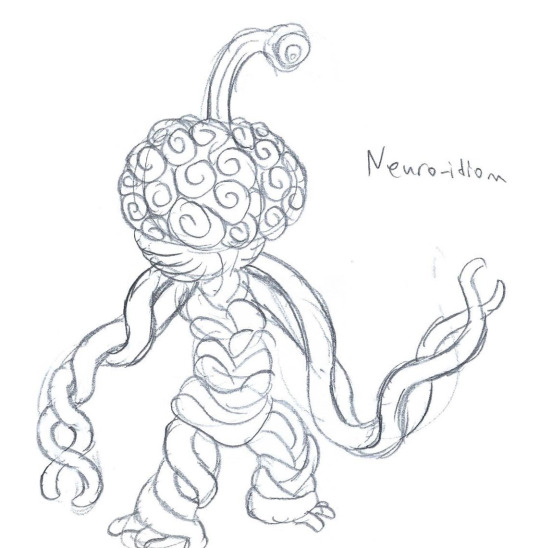
@titleknown brings us Neuro-Idiom, a brain monster who creates psychedelic mass hallucinations! Formed from a bunch of aliens fusing their minds together, Neuro-Idiom conjurs other creatures out of thin air with its psychic powers, and has pretty much every other psychic power to boot!
Neuro-Idiom’s primary design, that of a big walking brain creature, fills a monster archetype that hasn’t been present in ATOM thus far - i.e. the big, ambulatory, disembodied brain, and yes, that is a SUPER popular archetype for 1950′s/60′s monster fiction. Its psychic projections also pay homage to various monsters in fiction that were actually just the manifestations of an unsound mind - the Id monster from Forbidden Planet, the crawling brains of Fiend Without a Face, and the Crackler from Godzilla: The Series are examples of this concept. The backstory of this monster would need to be reworked since it kind of ignores that “kaiju” in ATOM is a word with a very specific meaning (you can’t have a kaiju without Yamaneon involved), and the monster having amplified versions of EVERY psychic power makes it significantly more powerful than anything in ATOM’s canon, so that might have to be toned down a bit as well, but all in all it’s a lovely brain monster!

@drrockso20 brings us our final entry, the massive bison Chief Wrigley! With gorilla-like arms and enormous horns, this big bovine has the muscle he needs to protect his herd and territory from any creature that dares to challenge it! He’s not all brawn, either, as Chief Wrigley is clever enough to use the environment to his advantage, and even makes use of simple tools from time to time. He can telepathically communicate with others, and can sometimes generate electric blasts from his horns.
With a very unique design, power set, and personality, Chief Wrigley has the makings of an excellent protagonist/hero kaiju, the kind who could headline his own corner of ATOM’s kaiju-verse. Bison are a really underused basis for a kaiju, too - they have very unique heads, and their bodies are build in a way that’s very good at conveying mass. With just enough special powers to make combat scenes interesting, but not so many that he feels out of place in ATOM’s world, Chief Wrigley is a strong contender in this contest!
Those are the entries! Who will be the top three winners, and who will get the grand prize? You’ll have to wait a bit longer to find out, but for now, let’s appreciate how many wonderful monsters we made here! In a way, they’re all winners in my book, even if I can’t give prizes to the whole batch!
43 notes
·
View notes
Note
Was there not a giant prehistoric giraffe that walked on its knuckles, once?
Nope! I think what you’re thinking of are chalicotheres.
Chalicotheres are far, far weirder than giraffes. For one, they’re oddd-toed ungulates - closer to horses, tapirs and rhinos.
There’s really two groups of chalicotheres - the schizotherines and the chalicotherines. Both groups differed from other ungulates in that they had claws. Let’s look at schizotheres first, and work our way up.
Schizotheres are, as chalicotheres go, pretty vanilla - which is to say, they’re weird as hell. They had the aforementioned claws instead of hooves, but didn’t walk on their knuckles. Here’s the skeleton of Moropus:

Moropus is usually translated as “slow foot”, but can also be translated as “moron foot”. Which I think is funnier.
Anyway, that’s not too out there. If you block out the claws, you can imagine this as something like a horse or hornless rhino. So the claws pose two questions:
1. What were they used for? And2. How did they evolve?
Analysis of their teeth wear indicates that they were largely herbivorous; it makes sense then that their claws could be used for digging, grabbing branches, or even catching small prey (like the deer I brought up in a recent post, few “herbivores” will turn down meat, and an animal with big claws like this is likely no exception).
How did they evolve claws? All modern perissodactyls (odd-toed ungulates) have hooves of some variety, but this wasn’t the ancestral condition. Early horses like Eohippus had more “normal” mammalian feet:

This condition is somewhat retained in tapirs, which have less hoofy hooves than horses or rhinos:

So it’s not difficult to see how something like that could evolve into chalicothere claws. Does this mean that they re-evolved sharp claws from blunt ones? I’m not sure, but it seems to be the case.
I can’t talk about schizotheres without bringing up Tylocephalonyx, which looked similar to the above Moropus but with a domed, pachycephalosaur-like skull:

What function did this dome take? Well, not high velocity head-butting, that’s for sure - the dome is largely hollow and supported by struts of bone. Some sort of nasal or sinus function is unlikely, as this structure isn’t linked to the nasal passages and doesn’t have the internal structure for that kind of thing. Most likely, it was a visual display structure and/or used in low-stress flank-butting.
Schizotherines ultimately outlived the chalicotherines; the most recent ones seem to have persisted into the early pleistocene, just under two million years ago (There are reports of them being found possibly as recently at 780,000 years ago - though I haven’t found a clear source for this).
Chalicotherines are where it really starts to get weird. They had the weirdness of normal Moropus-like schizotheres, but additionally, they walked on their knuckles and had super short hind legs:

(Image by Julio Lacerda @paleoart - go check him out!)
In addition, as they grew up they lost their canines and incisors, and their hip bones have rugosities on the back end.
All this combines to give a picture of an animal which essentially evolved to sit on its arse, grab plants, and drag them into its mouth. This is a surprisingly common lifestyle choice - therizinosaurs, giant ground sloths, giant pandas, and gorillas all do it.
One has to wonder how exactly knuckle-walking evolved in these animals, which had such discrepancy between their arm and leg length that they must have been quadrupedal. So far as I know, we don’t have any clear transitional fossils, so we can guess that they may have first evolved to a lifestyle of sitting on their butt and eating, then specialised the claws towards raking in food, and then could more comfortably walk on their knuckles after they stood back up.
466 notes
·
View notes
Note
My story is going to place in prehistoric times and I cannot find any information on the existence or status of plus sized people that I believe is neutral and not fat-shaming. Most sources say there weren't any, since better diet and a lot more exercise, but I doubt that, to be honest. Should I just say screw it and add plus sized characters anyway or would you suggest finding scientific sources first?
Mod Miri Note: Hi folks, there’s a lot of talk in this post about body size which I can be triggering for some readers, and with tumblr’s tag system being pretty unreliable, I just wanted to put up a quick warning in case that would be an issue for any of our followers who may want to skip this post.
Feral: Yes. If you want to include plus sized characters, include plus sized characters. First of all, waist size is not actually a great indicator of physical fitness level. Second of all, at some point in prehistory humans evolved and when we did that, we evolved to store fat; this was likely for a reason. And third of all, no one is going to care if you do or do not find "scientific proof". The truth is, people have been people for as long as there have been people.
Tex: I would suggest to first figure out why you are defining things in the term "plus sized" - Google's Ngram Viewer finds that this wasn't in public circulation until almost 1950, which means that the vernacular would be entirely different the further back you go into the past. Wikipedia's article on "Plus-size clothing" indicates that the origins for this size group in fashion had comparatively very recent roots.
"Plus-size", "curvy", "big and tall", "stout"- these are all euphemisms to refer to a body type that is considered larger than the normal range. Human bodies are delicately-organized organic machines, and while they can tolerate a wide variety of stressors, they can only tolerate any given stressor for a certain amount of time before it damages the body - sometimes permanently, and fatally, if it's allowed to go unchecked.
The human body is built to be within a certain weight range for given heights - despite the flaws of the BMI, with its difficulty in telling apart muscle from fat (and which type of fat), it's still a good tool when used in conjunction with other diagnostic tests. To be overweight and to be obese are separated by very thin lines, and is better discussed in @ucsdhealthsciences' post "Fat but Fit: a pleasing myth or something else? ".
Given the comorbidities of being either overweight or one of the three grades of obesity, carrying more fat on your body than your body can safely tolerate is quite literally dangerous for your health. Prehistoric peoples rarely had the luxury of idleness or having someone transport them instead of walking (or even riding a horse/similar animal). Walking in and of itself is ridiculously good for your health, to the point where exercising in the form of a gym or even manual labor can be a marginal part of one's exercise routine if someone has a choice about it.
I don't know why you doubt that a better diet and more exercise wouldn't reduce the occurrence of overweight/obese individuals - excess weight from specifically white fat has serious detrimental effects on the body and has a tendency to kill people off:
- "Study in mice suggests drug to turn fat 'brown' could help fight obesity"] from the University of Cambridge- Wikipedia- University of Virginia Health System - National Institute of Diabetes and Digestive and Kidney Diseases - "The Definition and Prevalence of Obesity and Metabolic Syndrome" by Atilla Engin - "Prevalence of polycystic ovary syndrome in Chinese obese women of reproductive age with or without metabolic syndrome" by Liang, Peiwen et al.- ittybittykittykisses, archived version - Stanford Health Care - PDF "Mechanisms, Pathophysiology, and Management of Obesity" by Steven B. Heymsfield, M.D., and Thomas A. Wadden, Ph.D.- "Review of Childhood Obesity: From Epidemiology, Etiology, and Comorbidities to Clinical Assessment and Treatment" by Seema Kumar, MD and Aaron S. Kelly, PhD- "A Proposal of the European Association for the Study of Obesity to Improve the ICD-11 Diagnostic Criteria for Obesity Based on the Three Dimensions Etiology, Degree of Adiposity and Health Risk" by J Hebebrand et al.- "Health Effects of Overweight and Obesity in 195 Countries over 25 Years" by The GBD 2015 Obesity Collaborators - "Study of nearly 300,000 people challenges the 'obesity paradox'" from the European Society of Cardiology
The Archaeology News Network has an article about prehistoric obesity, and how it relates to fat storage in humans - the mutation of the uricase gene that was originally meant to help ancient humans survive famines and seasonal periods of low food. "Evolutionary history and metabolic insights of ancient mammalian uricases" by James T. Kratzer et al backs this idea up and goes into some further detail. "Archeologia dell’alimentazione umana [PDF]", or "Archaeology of nutrition" in English, by F. Gregorio and M. Sudano (abstract also provided in English) talks about how the human genotype has changed as diet and sedentary levels shifted.
Perhaps you're thinking of the Venus figurines as an example of "plus size"? But that's still not quite right - many of these figurines are meant to display what fertile women look like, especially pregnant ones (peak fertility for a great many cultures, but also a temporary state for women), and real-life steatopygian body types are mostly restricted to either parts of Africa or parts of India, often by tribe.
In China, and I believe parts of Asia with similar cultures, fat under the chin heralds many good things - possibly because it meant you weren't starving and thus had enough food to be considered wealthy. Your mileage will vary on that, because China and many other cultures frown upon consumption unto excess for a variety of reasons.
People with more weight on them than average for their population, historically, have access to more food - which means ruling families, wealthy people - and once it was invented, (wealthy) farmers. But many cultures that were around in prehistory didn't have those kinds of societal structures, and pre-agricultural societies were inherently on the thin side because they were nomadic (which meant lots of walking), and had a diet primarily of gathered fruits/vegetables and whatever meat they could hunt down. It's usually the carbohydrates and other complex sugars in processed grains, such as breads, noodles, and bread-beers, that incite weight gain which is difficult to slough off, so it's something you need to keep in mind when worldbuilding your prehistoric societies.
If you want these kinds of body types in your worldbuilding, that's fine, but I would recommend that you don't try to view the past through the context of the present - life was very different back then, for very legitimate reasons, in ways that are neither wholly good nor wholly bad.
Saphira: Tex effectively nailed it, but I realize that you are likely writing "Plus-sized" characters into your narrative for representative purposes. You see how people under that title are treated in our current era, and you want to give them a more positive experience through your story. This is benevolently spirited, and so I understand your frustration with the situation. Being that history is not giving you a foothold for your vision, it's time to try another method.
Let's take a look at the Venus Figurines! They were made to represent women with bounty of life within them (as they were pregnant). They were also structures that represent faith. It gives us a fun, and positive, perspective on figures who are plus-sized. If we add a few degrees of separation, we get a foothold! First step: Pregnant people are plus sized. Second Step: Plus-sized means fertility and life. Third step: Anyone representing that plus-size is a bringer of fertility and life.
If Humans didn't have that plus-size due to their lifestyle and resources, then they may have idealized it. Look at how the renaissance models their women. They are plump and wealthy. Would not the people in your era feel similarly? Would they seek out, would they dream of, someone with that stature? Would they have a divine figure with those attributes? "This Venus figure represents a woman who is pregnant." "This Venus figure is not a pregnant woman, for it does not give birth to human children. Instead, it gives birth to vibrant fields, fresh water and honeybees."
If you are using divines or magic itself, you can find ways to representing plus-sizes in more creative ways. If you are working in a natural world, you can represent them with faith, or impressions of other creatures (like the bounty of a fruit, or the strength of a bear). Honestly, if we can worship skinniness through the art of Photoshop, others can worship the equally idealistic forms of the plus-size and all the wealth it represents in a pre-historic era.
Constablewrites: Another thing to remember about the Venus figurines is that recent scholarship has argued that they aren't just pregnant women, but they're self-portraits of pregnant women. That is, what was generally assumed to have been created by someone else *koff* men *koff* as an idealized depiction may have in fact been a way for women to explore and understand their own changing bodies. Perspective is critical when talking about beauty standards.
And Tex's point about the connection between economic status and beauty really needs to be underscored. You can see the point in history where a white person with a suntan went from being someone who worked outdoors (which meant they were poor and therefore undesirable) to being someone who could travel somewhere sunny and lounge around outside (which meant they were rich and therefore desirable). People are inclined to look for a mate whose children will be healthy, well cared for, and prosperous; the outward indicators of that status, whatever they might be in a given society, end up being conflated with an abstract idea of beauty.
Feral: As Tex, Saphira, and Constable pointed out "plus sized" has a wide definition (and can mean as small as an American size 10 depending on the brand), and it's important to also remember that "prehistory" has a wide definition - specifically a 3 million+ year definition. Prehistory covers everything from the first stone tools 3.3 million years ago to maybe somewhere around 5,300 years ago. Kinda. Prehistory means "before written record" and runs through the Stone Age, Bronze Age, and Iron Age, which all end in different places at different times.
So, what this means is that depending on which epoch your civilization falls under, there may absolutely be the necessary agriculture and division of social class that have been brought up. Narrowing down when and where you are trying to base your worldbuilding in will help you as you develop you characters and do further research on a variety of issues that may come up.
Another thing to consider is that you're probably not going to be describing your characters as "plus-sized" in your story (and if you did, all your readers would have different concepts about what that actually means), so the clearer your idea of what the characters' body shape (aka "where mass tends to accumulate"), the easier I think it will be for you to describe the character to your reader in a way that expresses what you specifically mean when you're thinking "plus sized." The fashion designer Justine Leconte has a great video to teach people how to recognize different body types using celebrities [Youtube]. It is geared towards fashion and what to wear based on your body type, but the knowledge is still helpful.
You might have seen this post on Tumblr with the body shapes of all the greatest athletes in the world that might also be helpful for you. But ultimately, I stand by my original point. This is a topic that no matter what you choose to do and what evidence you use to back up your choice, some of your audience is going to have a problem with it. So, just create your world and characters as you see them.
33 notes
·
View notes
Text
Let’s Talk About Pokemon - The Chespin Family
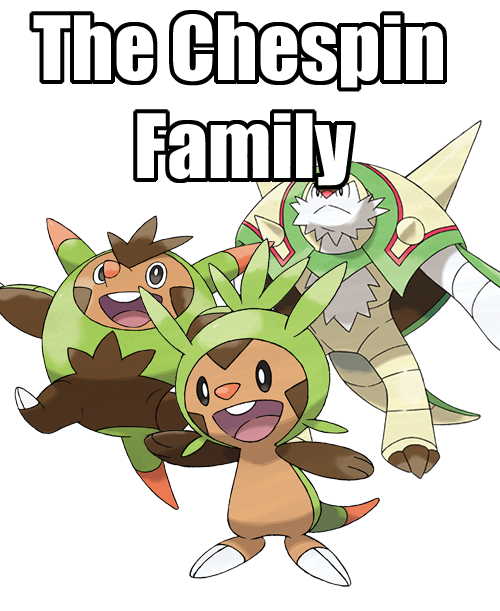

650: Chespin

And here, we start Gen 6 for real this time. And even though X and Y were a whole Generation ago, and as we're slowly looking forward to Gen 8, that first announcement of the X and Y trailer still feels like among Pokemon's hypest moments for me. Over is the age of 2D sprites, but now we have entirely new 3D models! The same ones that have been accompanying these reviews since we started. When it came to the starters however, I was pretty put off from Chespin if just for the simple fact that we have our first mammalian Grass starter after 5 Generations straight of making the Grass starters being dinosaurs and reptiles. It’s for sure a change of pace, as we’ll see later the “extinct animal” theme Grass starters have has been getting more nuanced since Snivy.
I’ve historically always gone with the Grass starter. Not even out of obligation, I just tend to love the Grass starters more. Chespin here is the sole exception out of the 7 gens so far. Chespin's kinda cute. But only kinda. It has the look of a much more typical Pokemon, not so much a Starter. I could see this wandering around in the wild and not bat an eye about it. I think the feature I like best is its head, overall. It has a cute hood/helmet thing going on. And it's got a cute face. But it's otherwise not working miracles for me.

Personal Score: 7/10

I’ll still give it a solid score cause TCG art can get it to look a little extre cute. But still easily my least favorite of the Grass starters to date.

651: Quilladin

And it's back to really goofy, awkward-looking Starter middle stages I'm sure we all missed! Quilladin is hilariously round, that helmet now turning into some kind of body-armor. And as the name hints, we've also got the beginnings of this line's theme in here as well! But also in turn, a theme for the remainder of our Starters this generation...
Quilladin itself gets a pass, but not much else. Just as an odd one out, cause the middle stages for the other two starters actually aren’t that awkward looking. I could see that as a deliberate thing to give Quilladin more identity, but it’s just not gelling with me too well. The lower half could do with looking a little more detached from the main body, in the sense of making the main body look more like it’s wearing a shell. Cause it otherwise just looks like skin.

Personal Score: 6.5/10

Too much of a goof to dislike, but it is the awkward one of the bunch.

652: Chesnaught

And coming out of its shell, we have the Grass/Fighting Chesnaught. Boasting heavy armor and arms that can turn into a shield in its ingame animations, along with the final forms of the other two Starter Pokemon, we have a clear cut overall theme with the Starter Pokemon for Kalos! Cause these three are actually different classes of Dungeons and Dragons (or Fantasy RPG in general) characters! With the well-armored, sturdy Chesnaught and its middle stage's name eluding to being the Paladin! Which is such a cool way to give the Starters an overall theme! Which is something I'd be more than happy to see become a mainstay in the series, giving your three options for monsters at the beginning have some sense of unity.
But as for Chesnaught itself, it's not a mind-blowing design for me. This may be a shock, but this time, the Grass type isn't my favorite Starter this time, not even among the three starters present. But Chesnaught's far from bad. Even beside the DnD theme, it's got cool bits, looks well armored without looking too busy in design. I do like it. And it's a well-designed monster. It's just far from an ideal critter for me.

But what about the extinction thing?! While Chespin and Quilladin may have looked a little more like chipmunks or hedgehogs, Chesnaught makes it abundantly clear that we're looking at a Glyptodon here. An armadillo-like prehistoric mammal that even has the beard-fur look Chesnaught does! So indeed, just like all Grass starters before it, the extinction-creature-grass-monster theme hasn't been lost yet. It’s a cool way to give a different take on it, choosing a mammal instead of a reptile. Prehistoric mammals definitely don’t get enough credit.

Personal Score: 7/10

Even so, it’s still a genre of creature I appreciate but don’t fully enjoy.
Overall:
Heck, what might be even more surprising is that this time around, the Grass starter is actually the Starter-trio's low point this Generation.
[Archive]
19 notes
·
View notes
Photo







Godzilla Gang Revised: Titans of the Atomic Ice Age
We’re chugging along with the next batch of kaiju from the Godzilla Gang: the giants of the nuclear winter-fueld Atomic Ice Age!
King Kong: a bipedal ape almost as large as Godzilla himself, Kong’s kind flourished during the Atomic Ice Age, ruling their ecosystem with a mix of brain, brawn, and electro-static shocks from their fingertips. The end of the nuclear winter led to their decline, however, and now they are reduced to a single specimen. However, while King Kong may be the last of his kind, he won’t go down without a fight, and continues to rule Skull Island despite multiple coup attempts from his kaiju neighbors.
Yetrigar: also known as the Great Watchuka, Yetrigar is an aberrant mutation of the (not-so-great) watchukas, a species of white-furred apes that inspired the myth of the yeti. While the average watchuka stands twenty feet tall, Yetrigar is far larger, and has protected his people from many threats for thousands of years. (Based on both Yetrigar from the Marvel Godzilla comics and the Great Watchuka from The Godzilla Power Hour.)
Skauroch: Plants suffered greatly during the Atomic Ice Age, and thus evolved many aggressive tendencies to survive. Near the equator, it was common to find many species of plant that developed a symbiotic or even parasitic relationship with fauna. Such is the case with the Skaurochs, a species of enormous water buffalos whose backs are a considered fertile ground by various species of swamp grass. Luckily, the Skauroch is capable of producing enough energy and nutrients to keep both itself and its floral parasite sated. (Based on the Sker Buffalo from the Monsterverse.)
Mother Longlegs: an enormous arachnid, Mother Longlegs benefits from a strange sort of natural camouflage, as its legs allow it to blend in with the bamboos forests it calls home. Of course, it was specifically adapted for the enormous breeds of bamboo that grew near the equator during the Atomic Ice Age, and found its habitat dwindling as the age came to a close and bamboo stopped growing quite so large.
Isabora: Enormous rodents, the Isabora is a burrowing creature that adapted to bore through ice-encrusted landscapes. It does so by superheating a strange bulging organ on its head, which in turn melts through the ice above it. (Based on the Ice Borers from Godzilla: The Series.)
Rhinosaurus: Enormous and heavily armored, Rhinosaurus has the thickest skin of any mammalian kaiju, making it one of the most durable giants to roam the earth. Despite the vast weight of its heavily armored frame, it can still run at impressive speeds, striking enemies with tremendous force.
Vagnosaurus: Infected by some hideous parasite, Vagnosaurus is a heavily mutated prehistoric whale with a nasty temperament. While it suffers from its infection, the parasite does have some benefits, as it will lash out with its tendrils at anything that threatens its host.
Deserpentis: a colossal sea snake, Deserpentis is not the most impressive kaiju from the Atomic Ice Age, though it does possess a very powerful venom. (Based on the Giant Sea Snake from King Kong Escapes.)
Psychovulture: Despite a superficial resemblance to pterosaurs, bats, and the flying reptiles of the Atomic Era, Psychovulture is actually a flying lizard, with a wing structure unique to itself. Its name comes from its manic attitude, which in turn is caused by the omnivorous reptile’s addiction to Skull Island’s intoxicating soma berries. (Based on the Psychovulture from the Monsterverse, as well as various flying monsters that fought King Kong over the years.)
Spormantis: A colossal insect whose hide resembles a rotting tree, Spormantis has some of the most perfect camouflage of any Atomic Ice Age kaiju. Had the radioactivity it needed to maintain such large size not subsided during the end of the Atomic Ice Age, Spormantises would still populate the globe, instead of being stuck on their current sanctuary of Skull Island. (Based on the Spore Mantis from the Monsterverse.)
Oodako: also known as the Mire Squid (despite being an octopus), Oodakos are massive cephalopods that could survive in both fresh and saltwater environments, and were even hardy enough to live on land for several days before drying out. Believed to be the source of the kraken myth (as well as other many-tentacled monster legends), Oodako are far more aggressive than other large cephalopods, and appear to enjoy eating human beings.
Next Time on the Godzilla Gang Revised: The Dorats
43 notes
·
View notes
Text
Jurassic Park - Expanded With Modern Knowledge
I’ve posted a few times now on how to redo Jurassic Park/Jurassic World in terms of Fauna Diversity and other factors. So you can say with this post I’m “Back on my Bullshit.”
Let’s dive right in, shall we? We’ll see some repeats, but others not so much. We’ll go about it via different exhibits: The Primary Tour, The Aviary, the Aquarium, The “Fossil Zoo”, The Feeder Animals, and the WIlds.
The Wilds
There are indeed wild animals in Jurassic Park. In the book, part of the whole thing as the re-creation of an extinct ecosystem. The island Isla Nublar is based on, Cocos Island, is extremely isolated and secluded. Outside of feral animals ( pigs, deer, goats, cats, and rats), there is very little land life. Arthropods (Primarily ants, butterflies, millipedes, centipedes, spiders, and isopods) and 2 species of lizards - an Anole and a Gecko. That’s about it. Other sources say there are other reptiles on the island, but I have yet to find any details beyond that.
Though there are a LOT of birds. 90 species, mostly seabirds using it or the offshore rocks as breeding sites. Endemic birds include a Cuckoo (The Cocos Cuckoo, which is a glorious name a had to share), a finch, and a flycatcher. Most other birds are found elsewhere inland or offshore.
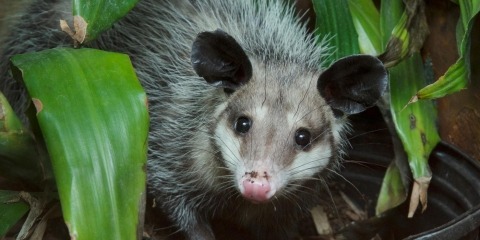
The books add 4 animals to the wilds: frogs, leeches, large tarantulas, and opossum. It acknowledges feral rats, but little else. I’d include them, easily. Several varieties of Opossum, because they are an archetypical “Ancient” mammal. The Common and Virginia Opossum, the Water Opossum, and 2 types of Mouse Opossum are all native to Costa Rica and could easily island-hop to Nublar beforehand, or be introduced for a “Night Safari” element.
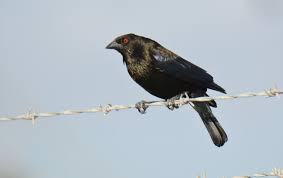
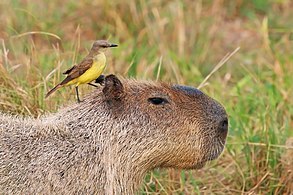
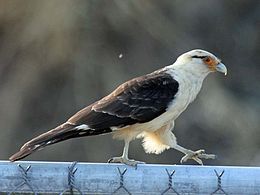
Me? There are 3 birds I’d bring focus to. The Bronzed Cowbird, the Cattle Tyrant, and Yellow-Headed Caracara. All of them follow large animals (or at least, things Capybara sized or bigger) and eat insects disturbed by the larger animals, or that try to feed on the larger animals. All are native to Costa Rica and its surroundings, so with the influx of large herbivores, they are bound to come over. Further, smaller herons and egrets would also take advantage of the larger animal movement disturbing prey.
South America also has its own dung beetles, and I bet a few of them could be called over to all the free food. Most deal with monkey poo, but I doubt they’d ignore the bounties available. InGen may bring in their own to handle the elephant-sized spore, but there will be dung beetles. Lots of them.
Other Costa Rican fauna I’d include as background elements (that could feasibly be on Isla Nublar AND fit the prehistoric aesthetic) include shrews, Central American Agouti, Northern Tamandua, Nine-Banded Armadillo, Brown-Throated Three-Toed Sloth, Hoffmann’s Two-Toed Sloth, and Central American Dwarf Squirrel.
But we also know that InGen released animals into the park that were ‘prehistoric’ to make the whole area support the dinosaurs in some way. This included a (grossly misplaced and oversized) dragonfly/griffinfly.
So, in a more realistic version, what would they do release into the wilds of Isla Nublar?
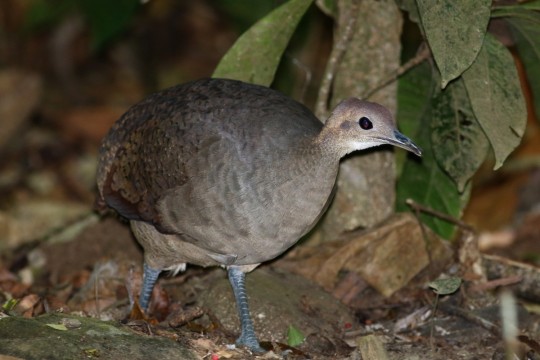
Tinamous. As I’ve said before, they can easily be in enclosures with larger animals. They’ve been in their current form for about 10 million years, and they resemble ancestral ground birds (the kind that survived the KT Boundary) extremely well.
Capybara. Docile as hell and gets along with everything, as well as attracting the tick-eating birds mentioned above, these animals can chill with the best of them. Plus the genus dates back 3.6 million years, with the subfamily going back about twice that far. They are a bit longer than the largest known Mesozoic mammal (Repenomammus (90cm, 13kg)), growing to 1.3m and 68kg.
The Feeder/Support Animals
In the novel, there are made mention of fish being stocked that the Tyrannosaurs feed on. The Arapaima is about the only fish for that environment (and easily obtainable) that could fit the bill. They also use goats as feeder animals, and in the movie, they use cattle to feed the raptors.
In my take, the carnivorous animals would primarily be fed with fish and poultry. Some smaller ones may warrant mice or rats, but fish would work much better overall. So, Chicken, Turkey, Arapaima, Fathead Minnows, Tilapia, Poecilia, and so on. Given what we currently know about Tyrannosaurs, 6 Turkey a day would be enough to keep it fed (T. rex may need about 40k calories a day to function, and one turkey can provide about 7k calories). Or 5 Arapaima (fish provide 82 calories per 100 grams, and arapaima can get up to 200kg, even assuming 100kg, that’s 8,200 calories per fish).

Goats have about 1 calorie per gram, so a goat weighing 40kg (not out of the ordinary as breeds range from 20 to 140kg, but it would be an overall large goat) would meet the dietary needs of a Tyrannosaur. I’ve already mentioned the cowbirds, but they are pretty important for overall animal health. Because I’m sure there are ticks since the deer got on the island.
The Fossil Zoo
Here are “Living Fossils” and things reverse-engineered from existing animals to be more akin to their prehistoric brethren. As well as their mammalian De-Extinctions. Because some would be rather easy.
Some of the ‘wid’ animals would have an example or two in this more “proper’ zoo environment: Capybara, Agouti, Nine-Banded Armadillo, Tamandua, Sloth, Opossums.
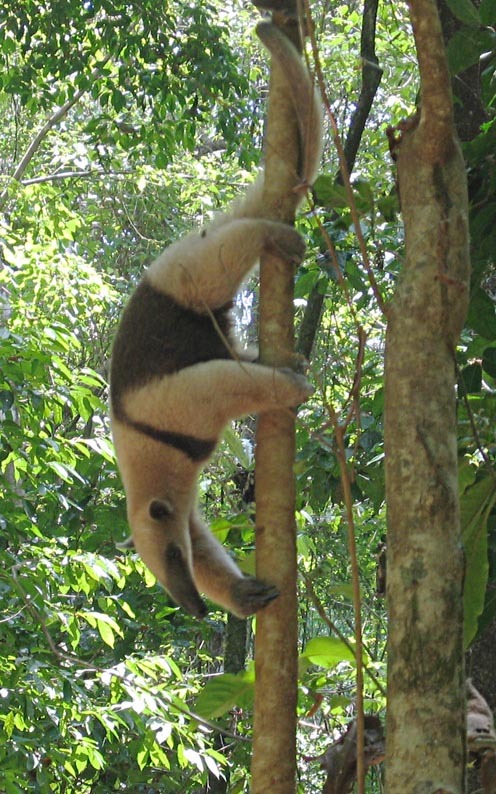
Other mammals of note in this section would be Treeshrews, an Aardvark, Greater Mouse Deer, Black and Rufous Elephant Shrews, A Tapir, Chacoan Peccary, Solenodon, A Giant Anteater, Platypus, Short-Beaked Echidna, and Long Beaked Echidna.

The Platypus and Long Beaked Echidna may be modified to be larger (2ft long, and 4ft long) to match fossil ancestors.
It would also be home to 3 de-extinct Mammals. Quagga, Thylacine, and Gigantopithecus. The first is easy, the second could get additional funding, the third... Because it’s Cool.
But with any de-extinction, there come problems. This is Jurassic Park after all.
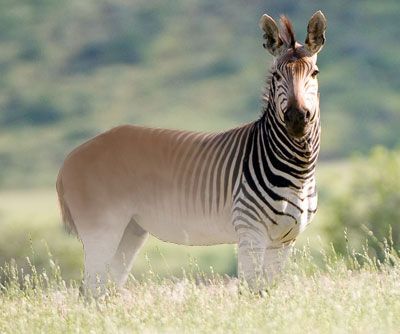
Quagga is easy to tame but can be high strung at times. It does not react well to the smell of predatory dinosaurs.
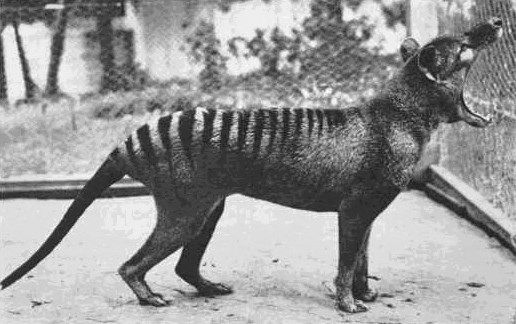
Thylacines ... have a very nasty hunting technique of BITING OFF FACES. They aren’t bloodthirsty or anything, even taking turns to feed in an orderly fashion, but their hunting technique is rather mean.
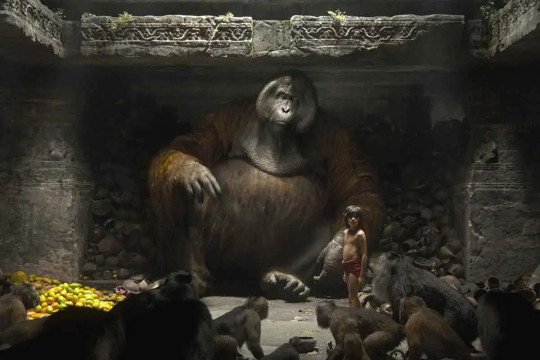
Gigantopithecus are 3m tall, 500kgs, and STILL able to climb rather well. it looks like an Orangutang trying to play Gorilla, but with only minimum sexual dimorphism in terms of size (males are still bigger) and it’s working out very well. Like orangutans, they are natural cage breakers. They also have very strong jaws and large canines. They will bite when angered, and if it wants to, it is strong enough to wreck several people in a charge.

Capybara, Mouse Deer, Tapir, Peccary, Giant Anteater, and the de-extinct trio would have outdoor enclosures, naturally.
Most of the reptiles would be in the aquatic section, but there are 4 that would be here.
Tuatara (Modified for tropical environments), the Aldabra Giant Tortoise (possibly grown to “Testudo atlas”/Megalochelys atlas sizes -- almost 7ft across and weighting 4000kg), Quinkana, and Megalania.

Why? Because Quinkana is a cool crocodilian land predator, and Komodo Dragons are basically island dwarf versions of Megalania. Quinkana is 6m long (so it’s Q. fortirostrum rather than any of the other species), and Megalania 7m long.
Once again, we have the unexpected from the de-extinct animals.
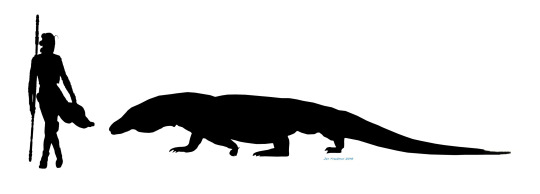
Megalania has two things that were discovered recently in its descendants. First, it is venomous. The venom lowers blood pressure in the victim. So, combined with its horrible bite, the victim will more readily bleed out. The other factor is they retain the Komodo Dragon’s ability to have virgin births. So, despite being female, they can generate MALE offspring asexually.
I think, narratively, it would be more fun for this to be the source of the breeding dinosaurs in Jurassic Park.
Despite being a crocodile, Quinkana is very active and mobile. It’s also a decent digger. So it makes a mess of the initial enclosure.

There are a few birds in the fossil house, both the subject of De-extinction efforts. The Dodo and Upland Moa. Both have some accessible DNA, and modifying birds' eggs is not too far fetched given what they've already done.
The last section of the Fossil House can be called the “Carboniferous Swamp” as it’s a re-creation (as best they can do) of that environment. Here are many amphibians, some with a proper prehistoric pedigree: Greater Siren, Midwife Toad, New Zealand Primitive Frog, Aquatic Caecilians, and Giant Chinese Salamanders. The latter of which naturally can be up to 6ft long. JP scientists ensure that they get big with modifications, and have gotten a few 2m monsters loafing around the “Fossil Zoo.” Basically, as many “Living Fossils” as they can cram together.
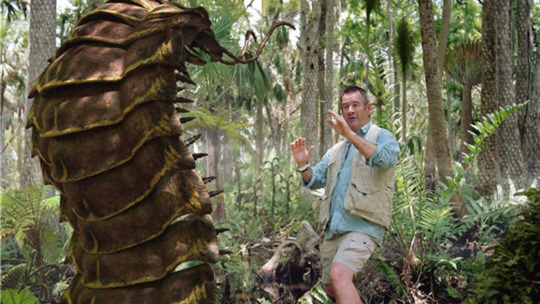
But the real prize here is the insects. There are a few ‘standard’ ancient insects, and some velvet worms on display. But the prize is the 4 ‘recreated’ insects. InGen’s versions of Pulmonoscorpius, Meganeura, Arthropleura, and Manoblatta. A 70cm scorpion, a Griffon-fly with a 65cm wingspread that was also 70cm long, a millipede 1m long, a 40cm cockroach, and a 1m Centipede.
Yes, a 1m Centipede. Narratively, we WANT things to go south, and well, there’s an episode of Lost Tapes which really has fun with giant Centipedes.

And once again, the Chaos Effect rears its head. Of course, they are breeding despite their best efforts. But it’s more than that.
The Pulmonoscorpius they have is derived from an emperor scorpion. This means it can burrow better than they expected, and while the venom of the base animal is not dangerous, the dosage in their Pulmonoscorpius makes it so. Paralyzing adults. In the weak or young, it can lead to coma and death. Also, it’s more aggressive than the base species.
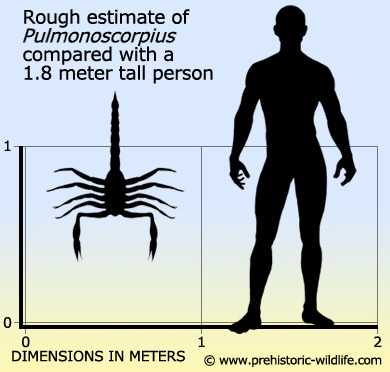
The Griffonfly is the most active among them and can use its wingbeats to breathe more effectively. It spends most of its time growing as a nymph, and a short portion of its life as a flying adult. To hold it, you need a falconer’s glove.
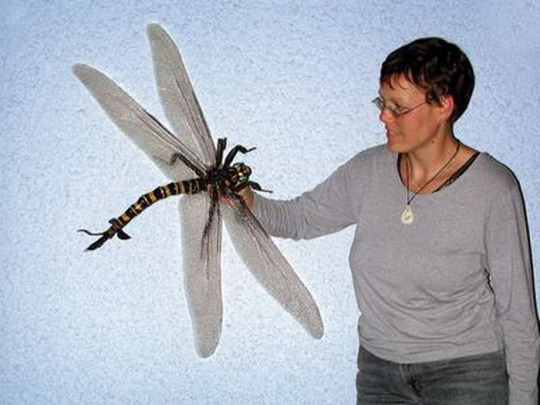
The Millipede Arthropleura is armored as heck. Far more than they expected. And it gnaws like a rodent.
The Centipede Arthropleura is a monster. It’s fearless and willing to attack people, with venom enough to greatly harm a person (killing the small and weak). Multiple bites can be fatal. They also act as carrion eaters.
And the roach? It’s an omnivorous scavenger. If hungry enough, they will gnaw on people who are sleeping near them.
The Aquarium (and Other Water-Ways)
There’s a lot of aquatic “Prehistoric” animals to draw on without genetic engineering. Considered “Fluff” by the park, they nevertheless flesh things out.
There are native fish in the waterways, mostly killifish. Ingen brings in (and modifies) Bichir, Paddlefish, Sturgeon, Lungfish (South American and Queensland), Gar (Tropical and Alligator Gar), Coelocanth, Bowfin, Arapaima, and Silver Arowana. Several of these are prized gamefish, so of course, Jurassic Park has a pond to fish for them.

The aquarium also includes Amphibians: Greater Siren, Midwife Toads, New Zealong Primitive Frogs, Purple Frog, Hula Painted Frog, and another Giant Salamander.
Aquatic reptiles are where things get more interesting. There’s are tanks for sea turtles (Olive Ridley’s Sea Turtle), Pig Nosed Turtles, an Alligator Snapping Turtle, and (of course) American Alligators.
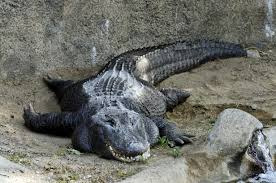
Now we get to the cloned animals. First, the aquatic crocodile Metriorhynchus. Also, Titanoboa (They call it Gigantophis, but it’s Titanboa). Nothosaurus, Ichthyosaurus, Plesiosaurus, and Mosasaurus round out the menagerie.
So, how do they go wrong?
Well, half of these animals give live birth, so the standard cloning technique didn’t work until they made an artificial womb. Titanoboa is misidentified and almost fully aquatic.
Metriorhynchus will ‘nibble’ larger prey. Bite off chunks of something swimming by, darting in and out. They may or may not kill people this way, but it will maim and ‘disarm’ them.

Nothosaurus have very dextrous hands, making the seal-reptiles natural cage breakers. They are also great climbers, so they speculate that the animals lived in rocky environments.
Ichthyosaurs look like dolphins, but they are not. More skittish than dangerous.
They thought Plesiosaurus was able to haul itself onto land, but it is not.

Mosasaurus... It is a mosasaur. A second roar of jaws to manipulate prey it captures is pretty badass enough. And it can swallow a person whole with little effort.
Among the dinosaurs, we have the Great Auk, the Original Penguin. Another recently extinct bird. Another bird in the Aquarium is the Common Loon, but by comparison, it is a minor addition.
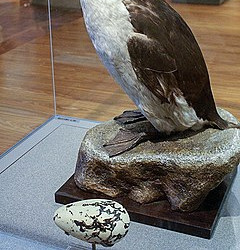
The Great Auk is an exceedingly brave bird. It will not run readily, preferring to peck and bite when confronted. Why it’s so brave is not evident, but it is, and won’t take ‘no’ lying down.
The jewel of the dinosaurs in the aquarium is the Halszkaraptor-- the diving duck raptor. Because, really, how could I not? This one is weird enough on its own.
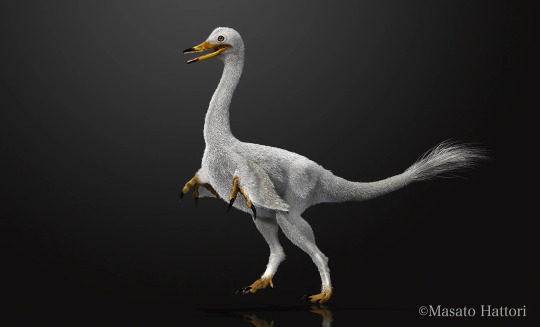
The Aviary
When I first put this together, I made an effort to keep the Pterosaurs small. I’m going to make some exceptions to that for Jurassic Park fun.
Modern Birds brought into parts of the aviary (because it has parts) are Tinamous, Seriema, California Condor, Magpie Goose, Mousebirds, Bearded Reedling, Broad-Billed Spaayoa, and Hoatzin.

Cloned birds include the Carolina Parakeet and Passenger Pigeon. These two have large open enclosures because they require a LOT of animals in their group to be comfortable. So already, there are over a hundred of each of these animals.
Avian Dinosaurs in the park include Archaeopteryx, Microraptor (which they call Tetraptertyx),, and Ambopteryx.
Archeopteryx is a glider capable of downward flaps, but no upstrokes. A generalist with the coloration and overall habits of a solitary crow.
Microraptor is a better flying and climber than Archeopteryx with its four wings and wider grip, it doesn’t seem to mind people and will use them as perches -- which can be dangerous when their claws go in the wrong place.

Ambopteryx is the largest winged Scansauropteryx. An omnivore, this bat-winged beasty is just over a foot long and vomits caustic, foul-smelling stomach contents onto attackers when it is angry. So, really, it’s a “Dragon.”
Ceredactylus was the main Pterosaur in the Aviary in the book, and I’ll keep them around too. Complete with territorial nature.
Other Pterosaurs in the Aviary include Pteranodon, Quetzalcoatlus, Sordes, Anurognathus, and Dimorphodon.
Unlike the films, this remembers that Pterosaurs use their heads for grasping prey and have no eagle talons.
Pteranodon is more gregarious, an albatross scaled up.

Quetzalcoatlus is just... well, your basic Giant Azdarhkid pterosaur. It will totally spear a person and eat them. But it spends a lot of the time on the ground, so it keeps the enclosure size small ... for a Giraffe sized animal. And yes, it will eat people if it can.
Sordes is an eater of insects and amphibians. When disturbed, they will swarm around an attacker, pecking and biting to drive them off. This can lead to some unfortunate accidents.
Anurognathus is basically a pterosaur owl and insect eater. They have the same unnerving effect as owls. Their defensive cries and glowing red eyes are terror inducing among humans, easily generating panic.
Dimorphodon gallops along the ground most of the time, flying only for short distances. Insects and small animals make up the bulk of their diet. If it’s small and fast-moving, they will try and take a bite. That includes fingers. Or whole hands.
The Park
Now we come to the dinosaurs. There are 3 main groups of them in the park: Minifauna, Fauna, and Megafauna. The Difference comes down to weight. Megafauna is reserved for animals over a ton. Fauna is for animals above 20kg (or 50lbs). Minifauna is for animals below 20kg on average.
The park comes with 21 examples of Megafauna, 10 examples of Fauna, and 10 examples of Minifauna.
In the Megafauna, many of them are prone to being ... chaotic.
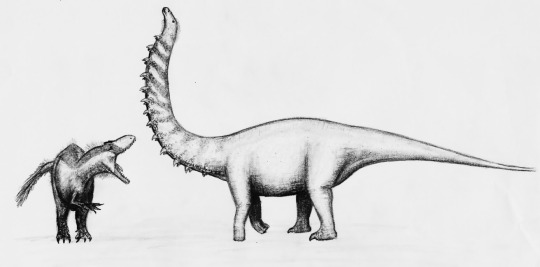
Apatosaurs are the second biggest animal in the park by weight (15 tonnes). Their necks are lined with spines they use for defense and in contests with each other. They also have a line of raised spines along their backs, which become quite wicked at the tip of their tail. Lashes with their tail, done to other herd members in dominance points, or against what annoys them, can be very dangerous. But not as dangerous as when they rear up and try to smash things with their feet or neck. It’s also a low feeder/grazer, vacuuming up food as it moves its head side to side.
Camarasaurus (C. lentus) are the heaviest animals in the park (20 tonnes), and are mid-range browsers. They are docile, but their large nasal cavity proves very enticing to Avian Flu, which it acts as a carrier for, but doesn’t really suffer from.
Spinosaurus is a big land pelican/Waddling Penguin/Crocodile thing. Big claws and jaws are nasty enough on their own with its semi-aquatic nature making it versatile, it still is goofier than it has any right to be. Which masks its danger.
Saltosaurus is a sauropod hippo with armored scutes along its back. That’s pretty darn weird enough. It’s as heavy as an elephant, and a browser as well, but not to the height of some other animals...
Tyrannosaurus hunts in packs like wolves, so they had to make a group of them as “Sisters” to prevent self-destructive behavior. So there are 4 “Sisters” that the park knows of. With all we know about T. rex, there’s not much more to ‘enhance’ it other than letting it be as smart as a modern alligator, or house cat. Yes, they are comparable. Eagle-Eyed, nose better than a bloodhound, and with powerful jaws, it is an apex predator for a reason.
Triceratops has small quills along its torso and back like a porcupine to defend itself in addition to armor plaiting. They prefer to travel in small groups and fights for dominance can occur if the group gets larger than 5 or 10 individuals.

Deinocheirus is r one of those dinosaurs “This is too weird for the 80s to handle” we now know of. When riled, its arms are very dangerous weapons. And it will bite, even if only to toss away smaller attackers. Eating fish and plants, this animal has an impressive bluff display, and confidence to back it up.
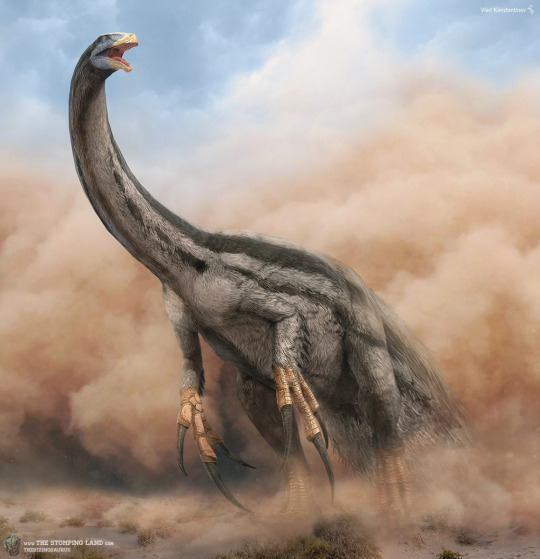
Theirizinosaurus is very weird, and worse, has the personality of a goose or swan. Very confident, will rush down what it thinks are threats, and those claws make it very dangerous.
Omeisaurus uses its clubbed tail to establish a pecking order (or “smashing order”) in the herd.
Euhelopus is one of the few true browsing sauropods, really resembling a Giraffe in posture or a small Brachiosaurus/Giraffatita. Like a Giraffe, it can kick with a LOT of force. Enough to decapitate a man from brute force alone. It’s the smallest of the long-neck Brachiosaurus, which is why it was targeted for cloning.
Ankylosaurus is a goat. It eats damn near anything. Primarily eating leaves, it also adores fruit, and will go after large insects when it can. Or swarms of them it just licks up after breaking open a nest. They are proficient diggers as well, they like to sleep in burrows they build. It’s also very well camouflaged, so you can trip over it and it will likely take a swipe at you for your mistake.

Edmontosaurus may be considered a ‘simple’ dinosaur from the bones, but that doesn’t tell the whole story, not by a longshot. See that picture? That’s an Edmontosaur!
Stegosaurus is an extremely stupid ninja. It moves quietly for its size, can wiggle and turn its plates red when angry as a distraction, and fold its whole body into a U shape to better strike enemies with its thagomizer. And it is not afraid of groin shots.
Styracosaurus is all about intimidation. When confronted, it will mock charge, holler, stamp, and make a fuss. But if you stand up to it, it will back off, or even run away.
Amargasaurus uses its neck spines defensively while grazing. When threatened, they roll their heads under their chests, sticking out their spikes, and charge. They do this with minimal provocation. They also lash their tails around wickedly.
Parasaurolophus is LOUD. Constant maintenance is needed on the paddock as they can rattle apart their paddock locks if they are not checked regularly. It also gets the attention of certain predators regularly. Insulation has so far proved ineffective.

Gigantoraptor is pretty damn weird all on its own. An omnivorous oviraptorosaur over 12ft tall at the hip, feathered and fearsome. It uses its feathery arms (as well as a displaying throat pouch to communicate with members of its species.
Allosaurus, the lion of the Jurassic. They behave similarly to crocodiles, but more actively. Which means they hunt semi-cooperatively. Because of their primarily slashing jaw setup and strong necks, they prefer to bleed large items to death rather than quickly kill them. They can still swallow a man whole (as long as they aren’t too big).
Plateosaurus is a large, primitive planteater. It walks on its hind legs, despite its size and descendants. When threatened, it rears up and tries to claw attackers who get to close like an irate Ant Eater. And those claws are very mean. They rake trees with their claws as a demonstration of power in the herd.
Borealpelta digs ruts for themselves to sleep in at night. This means only their armor bits show up. They usually use the same one when they can, but it still damages enclosures.

Carnotaurus is a Cheetahs. Extremely long-legged runners at high speed, and at long distance. They can also swallow a man whole by stretching their jaws out. Also, its tiny arms are used for flappy dance displays.
Now we come to the Fauna, which are small enough to get inside buildings and still be a visible threat to humans on occasion.
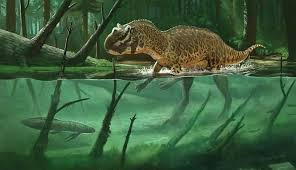
Ceratosaurus is basically a bipedal crocodile, scutes and all. The nasal horn is flat and largely for display. They prefer swampy environments and eating aquatic animals. The thick hides of these animals make darting almost impossible, and mildly resistant to small arms fire.
Pachycephalosaurus have dynamic skulls, the younger ones being spikier than the adults. And they will butt EVERYTHING that annoys them even slightly. Worse still, they are omnivores. They decrease the amount of meat in their diet as they age, but they won’t turn it down.
Dilophosaurus has the frill and venom of the novel/movies, but the frill is made of feathers rather than skin and is lost in adults, which can be up to 3m/10ft tall.

“Velociraptor”, or really, Dakotaraptor, is as smart as a crow, which means minor tool use. Juveniles can fly short distances to escape an attack. They are less like wolves and more like lions in how they hunt, climbing in trees to assist in their ambushes. Think of them as ground-eagle-panthers with crow intelligence.
Protoceratops make burrows to live in. They sleep for short periods throughout the day and night, at seemingly random intervals.
Struthiomimus’ fully developed wings are colorful, large, and help it maneuver at speeds up to 50mph (80kph). They also help it intimidate others -- their claws also packing a bit of a punch. Primarily herbivorous, they are also very vocal animals. Almost obnoxiously so.
Dryosaurus is the dinosaur equivalent of a deer or large gazelle, living in small groups in forested areas. Because of this, and an extremely skittish nature, they are hard to spot in their enclosures. Sure, they are ON the tour, but the runaway when the cars come by. It makes care for them difficult as well.
“Troodon” is really Stenonychosaurus. Omnivorous, the focus on rodents and other small animals. They also feed on more fruit, seeds, nuts, and other high energy plants more regularly than InGen thought. They are the best cage breakers in the park, being the smartest animals there (yes, smarter than the raptors). They are also guide-animals. They will guide larger predators, like tyrannosaurs to food sources they can’t access, but that the other animal can. Similar to Crows and Wolves.

“Oviraptor”, really Anzu, is a large oviraptorid. Herbivorous with occasional meanderings into carnivory, it’s main gimmick is its voice. It’s a Lyrebird. It can vocally mimic anything its herd before and incorporate it into display songs. It can also use this to manipulate other dinosaurs, be it attract small animals to eat, bring ‘help’ for itself, or scare away potential threats. So, imagine a scene. A group of humans is hunting for other survivors, they hear someone crying “Help! Help!” and occasionally screaming. They rush to aid and find this tall animal here. Their guard lowered in confusion as another predator sneaks up behind them and takes them down.
“Parkosaurus” is actually Oryctodromeus. A burrower like Protoceratops, they are more communal in their nesting. It’s rather unsettling to see animals as big as a medium-sized dog pop-up out of the ground like prairie dogs.
Microfaunae are Coyote or smaller animals that can still be dangerous, but not so often or as directly.
Coelophysis is the “Emu” of the park. They are inquisitive, but also not very bright. They are also opportunistic. Which can be hilarious, but also dangerous, because you are made of meat. And they see no qualms with biting someone and running away again and again. In groups.
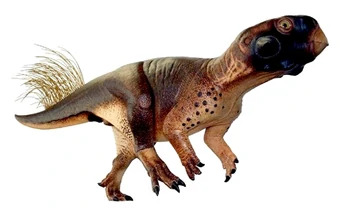
Psittacosaurus rattles its tail feathers as a means of simple communication. They also bite with a lot of force when agitated, enough to take off a hand.
Dromaeosaurus is a small raptor (or rather, typical, medium-sized one), but one more heavily built to take down prey larger than itself. This one will hook onto a person and bite away, ripping out chunks. Given they are about the size of a turkey, several of them can do that to a person.
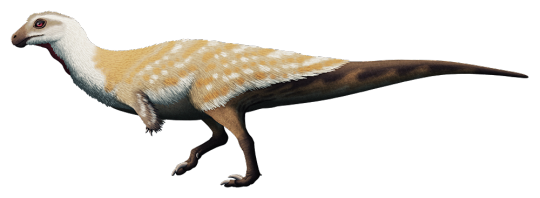
Vespersaurus is an opportunistic omnivorous desert dweller that runs along sand primarily, using its single grounded toe to get better traction and movement. Its kick has TWO large raptor-like claws on it, making it extra nasty.

Limusaurus is another Noasaurid, a strange group of dinosaurs related to Ceratosaurus. This one changes its diet as it ages. As hatchlings and juveniles are omnivorous, eating plants, insects, and small animals. As they become adults, they switch to an entirely herbivorous lifestyle. This confused the hell out of InGen first time through.
Nanosaurus (a.k.a. Othnelia/Othneliasaurus) is a tiny ornithopod that fills in the same role as a Thompson’s Gazelle. Small, grazing, and skittish. They like being in large herds for protection.
Panphagia is an omnivorous ancient sauropod relative and the oldest species of dinosaur in Jurassic Park. A consummate opportunist, its hands make it a pretty decent cage breaker. And it really will eat anything, almost as much as the Ankylosaurs or goats, but more carnivorous.
Procompsognathus is a chicken-sized carnivore that eats small animals as well as scavenges for food. It is also venomous, operating in groups to take down injured animals larger than itself.
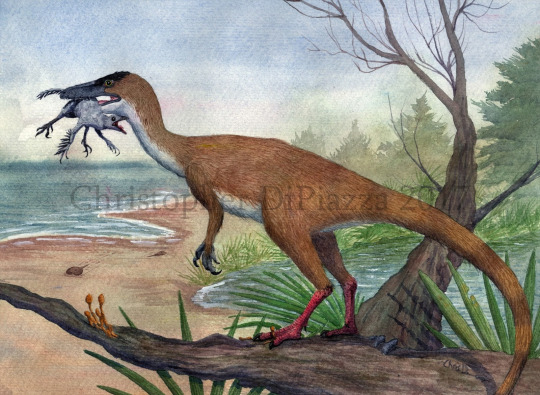
Compsognathus, by contrast, is a housecat in terms of personality. An expert killer of small things, but can easily cozy up to humans. Considered “Petting Zoo” material, if not for their teeth and claws.
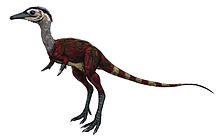
Shuvuuia is one of those animals that scientists even today don’t really know how it works and is also one of the smallest nonavian dinosaurs. It uses its claws to break open rotting wood and picks off insects very quickly. Because it eats a lot of poisonous insects and acid-filled ants. And it converts that into pure stink. Yeah, it’s an anteater-skunk dinosaur. Final Thoughts I could probably have shaved things down to 10-15 of the movies/books, but I wanted to fill things out not just for variety, but for a proper park. I’ll probably revisit this for a later post...
8 notes
·
View notes